By Lola Milholland
During the tumultuous first two weeks of November, when (these words still don’t feel real) President Trump was elected, I had the unbelievable fortune to travel to Japan with some of the most inspiring people I know.
Umi Organic is informed by the year I lived in Japan at age 20 when I first fully immersed myself in Japanese food culture and became obsessive about the context behind each ingredient. I lived in Kyoto, the perfect place for jumping off the deep end into a bottomless, context-rich food hole. It’s been over 7 years since I last visited Japan (11 since I lived there), and I have been desperate to return and both lose and find myself again.
I joined a delegation brought together by Stacey Givens, farmer and chef in northeast Cully at The Side Yard Farm & Kitchen. This is Stacey’s fourth year going on what she calls the Seed to Plate Tour. Stacey is sincerely big in Japan — on the news, in major magazines, hit up on her Portland farm by flocks of Japanese tourists in the summer months. During these annual trips, she prepares dinners like only she can (layered, colorful, textural vegetable experiences) for intimate groups using local Japanese ingredients. She also speaks about making the most of small acreage, farming among urban residents, how her work as a chef and event space is key to her success, and what it means to be a young woman farmer. Every bit of this is directly relevant in Japan, where many farms are shoulder to shoulder with urban housing, and where the average age of a farmer is even older than in the United States—at 65.9 to our 58.3. There’s a desperate need for new blood.
I first met Stacey half a decade ago when she was nominated for and won an Edible Portland Local Hero Award. I was assistant editor there at the time, and I was impressed by Stacey’s dedication to involving the local community in her small but abundant urban farm. Years later, Stacey continues to be extremely generous. In this case, that meant she invited six people to join her on her two-week Japan adventure — to cook by her side and meet with Japanese local food advocates.
Who were the members of Stacey’s Portland delegation on the 2016 Seed to Plate Tour Japan?
Kara Gilbert and Elaine Walker of Vibrant Valley Farm. These two women farm five acres on Sauvie Island, focused on vegetables and flowers. They run a CSA, CSB (community supported bouquets), and serve restaurants. They are keen business women with a sense for the long game, which has led them to growing indigo, an annual leafy shrub that we know as the vivid blue color of old school denim. On this visit, they arrived early to travel to the primary indigo region of Japan, Tokushima, to meet the next generation of leaders and get their eyeballs on their setup, equipment, and indigo compost — a living vat that turns dried leaves into the rich inky blue dye.
Corey Shuster of Jackalope Wine Cellars. Corey is an energetic one-man operation who does every step of the wine-making process, from selecting grapes to crushing, fermenting, aging, bottling, and selling. He’s also beloved to me because he will eat ramen whenever, wherever.
Photographer Shawn Linehan and her husband Ken Beck. Shawn documents small and local farmers throughout the Pacific Northwest, and her loving eye has taken her as far as Washington DC to shoot Michelle Obama in the White House garden.
And me, Lola Milholland of Umi Organic, pictured here sautéing cabbage endlessly. I also acted as occasional Japanese translator.
This year’s trip was built around two main happenings. The first took place in Kobe in collaboration with Eat Local Kobe at the newly minted Kobe Farmers Market and then at the Yuge Family Ranch. The second took place a week later in the town of Omihachiman, north of Kyoto in Shiga Prefecture, in partnership with a restaurant, Damontei, and its magical expat owner, Darren Damonte, and with a collective of women farmers who have organized themselves to grow the number of women farmers in their region. Both events involved meetings with local farmers and organizers and a three-course dinner Stacey conceived that we prepared and served as a crew. In between, we hung out in Kyoto, one of my favorite places in the world.
We collectively Instagrammed the living s#!+ out of this trip, so I recommend checking out our hashtag #seedtoplatetourjapan2016 (no abbreviations here).
I came home from this trip inspired by the power of community to stand as a bulwark against the status quo. Our community of travelers, all of us Portland business owners with immense drive and vivacity, face different but similar challenges. Being in their company energized me. I was blown away by the women in Shiga who have to face down an entrenched patriarchal society to farm in the way they believe will benefit the future and give their lives meaning. I am eager to spend even more time with the organizers in Kobe who are bringing back the best ideas they find in the world for successful local food marketing and organizing. And I was delighted by Darren and his wife Miwa, who bring spirit and joy to the kitchen; by my friend Kyoko, her cutie-pie daughter Shiori, and her family at the Yuge Ranch, who see everything in systems and nothing as impossible; and by those people so dear to me in Kyoto, who expand my definition of family.
Food bridges cultures. Now more than ever we have to support one another’s endeavors, share our good ideas, hash things out, be honest, open, emotional. I believe in the necessity for collective action and strength. Despite what happened in this election, this trip affirmed that more and more women are becoming vocal, visionary leaders and roadblocks will not stop us for long.
Of course, I also ate some insanely delicious food that will influence our upcoming Umi R&D projects as we work hard to launch sauce and broth concentrates, develop a soba noodle, and explore miso. Stay tuned for communal events that take this trip and its inspirations as their starting point.
Here are reflections on our experience. A huge thanks to Shawn for sharing her images, and to Stacey for making this experience possible.
The Yuge Bokujo (Ranch) and Eat Local Kobe
The Yuge (pronounced yoo-gay) Ranch, known in Japanese as Yuge Bokujo and by cheese lovers at Laitiere Yuge, sits on a mountain in the outskirts of Kobe. A third-generation family farm (with the fourth generation all under ten-years-old, toddling and running around wildly), Yuge Bokujo was the first cheese maker in Western Japan. Their operation works as a holistic system, with different family members and long-term staff managing each linked component. They have fewer than 40 cows, which provide milk for their cheese and milk production. They operate a bakery that extensively utilizes their milk, whey from cheese-making and wheat grown onsite. Their manure feeds into a biogas system, from which they draw energy and fertilizer, which they in turn use to grow salad greens, wheat, and field crops. For fun they also grow fruits, nuts, and shiitake mushrooms. And everything is utilized in their on-site restaurant, which they see as an educational space to introduce Japanese diners to cheese. Their fusion dishes are brain-exploding: Fresh ricotta-like cheese served in the style of fresh tofu with a small beaker of soy sauce, fresh grated ginger, and bonito. The leftovers from fondue used as the base for a Japanese-style risotto with whey.
Tadao Yuge, son of the founder of the ranch, father of my good friend Kyoko who coordinated our dinner there, and grandfather to the wild toddlers racing about, spent time in Northern California in the late 1960s studying dairy farming. He returned with a textbook from University of Wisconsin about making cheese. At the time, Kobe was rolling in money, so he decided to make a camembert. Slowly, he translated the textbook sections he was most interested in. He took a picture of camembert mold culture to a friend and they developed their own culture, which they have been using ever since. Now he refuses to show a picture of his mold culture to anyone!

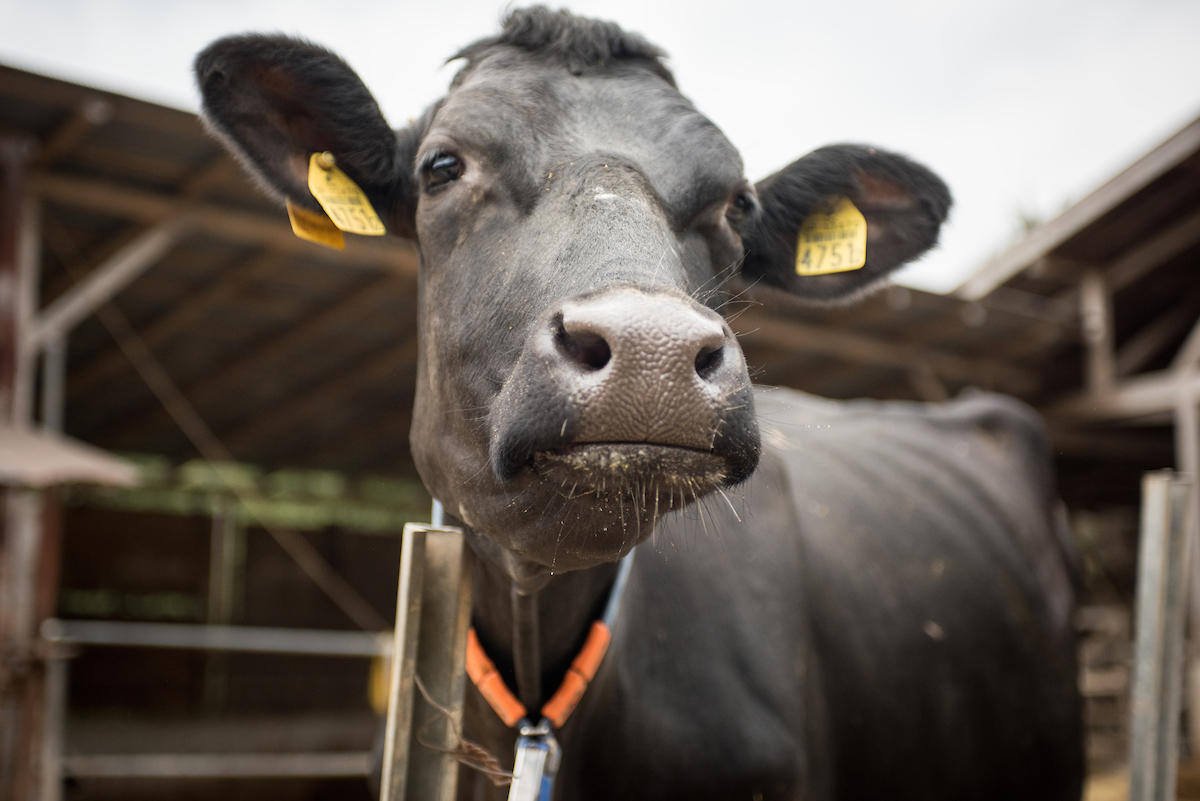
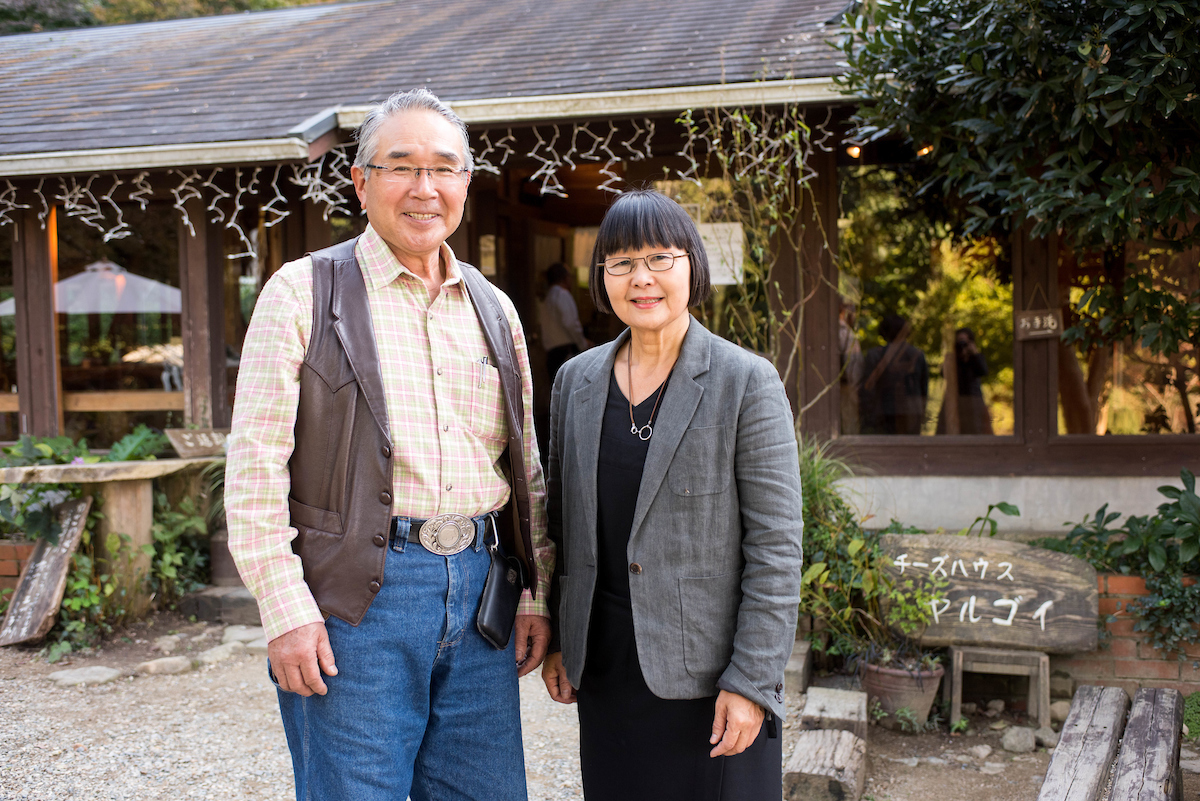
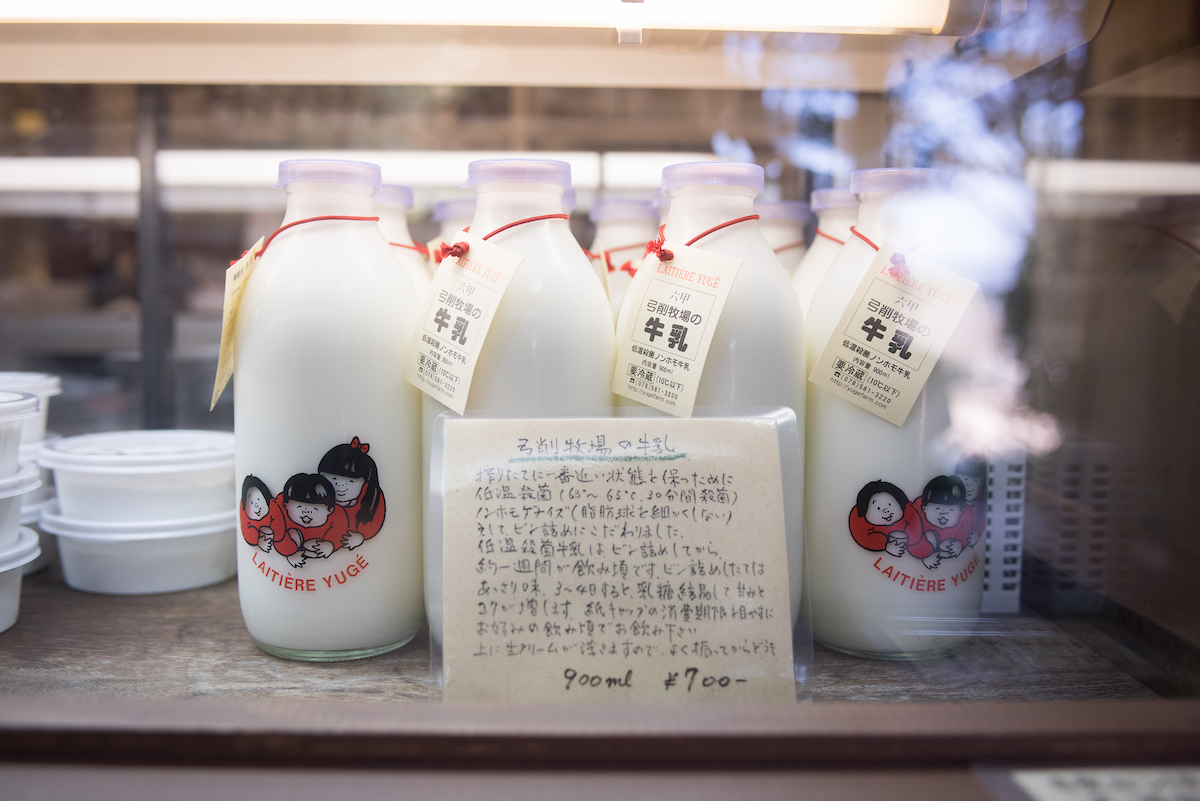
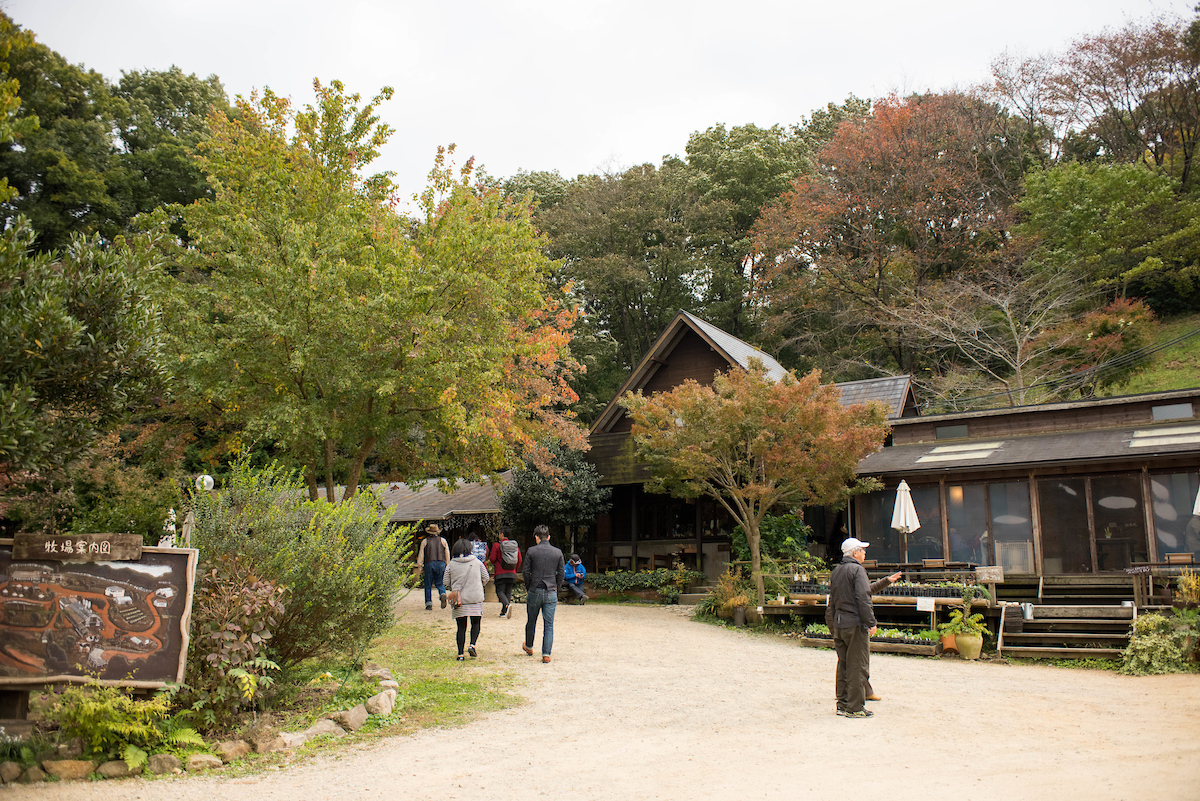
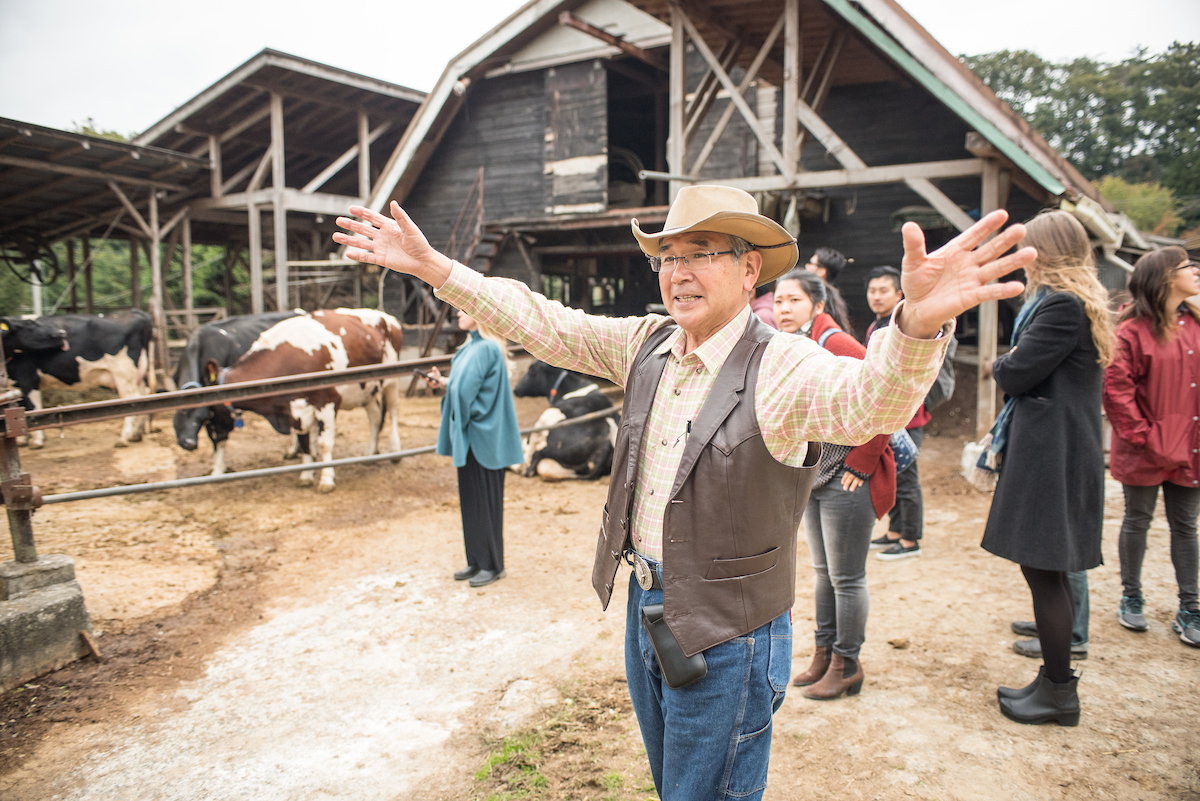


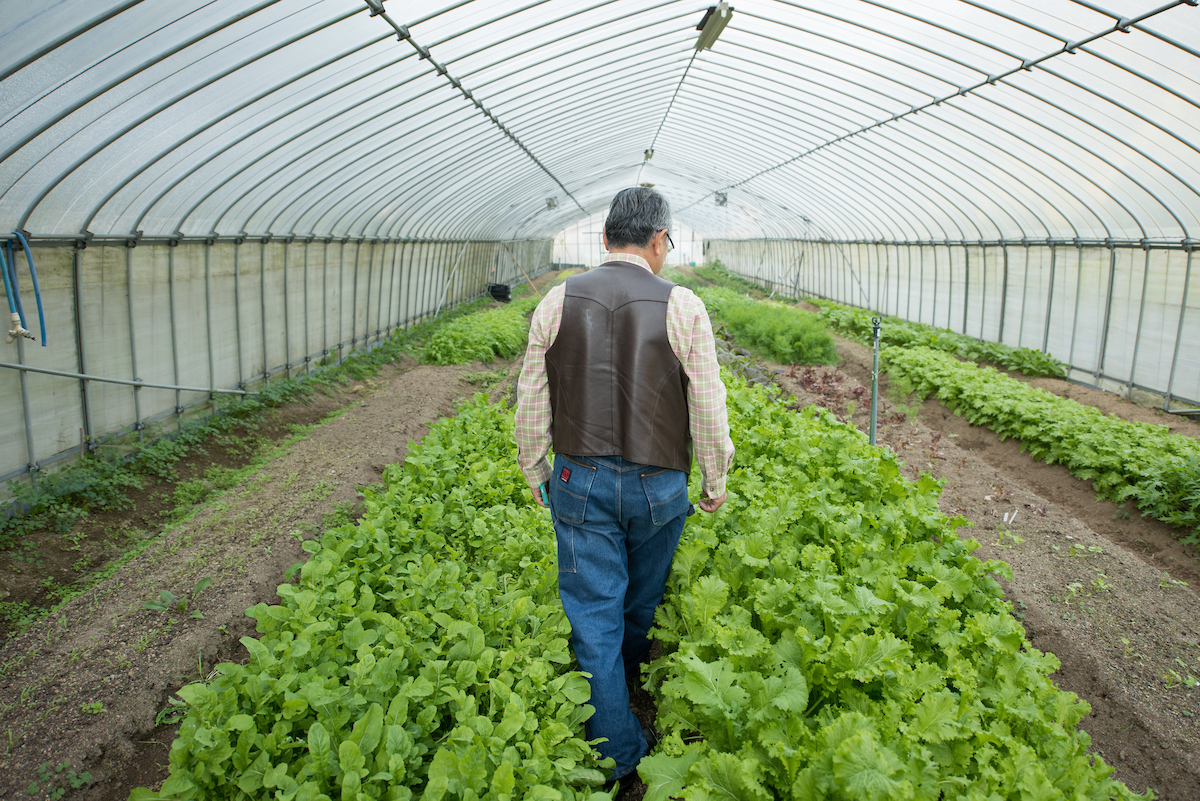

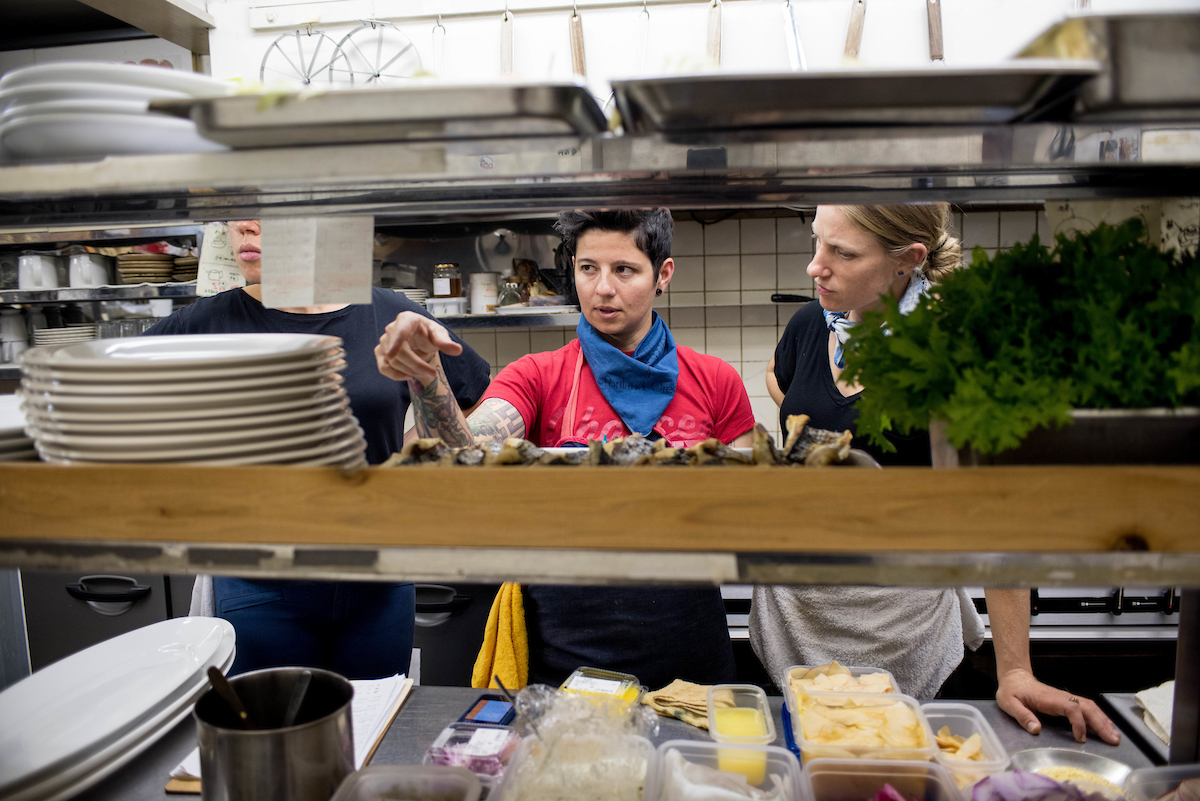
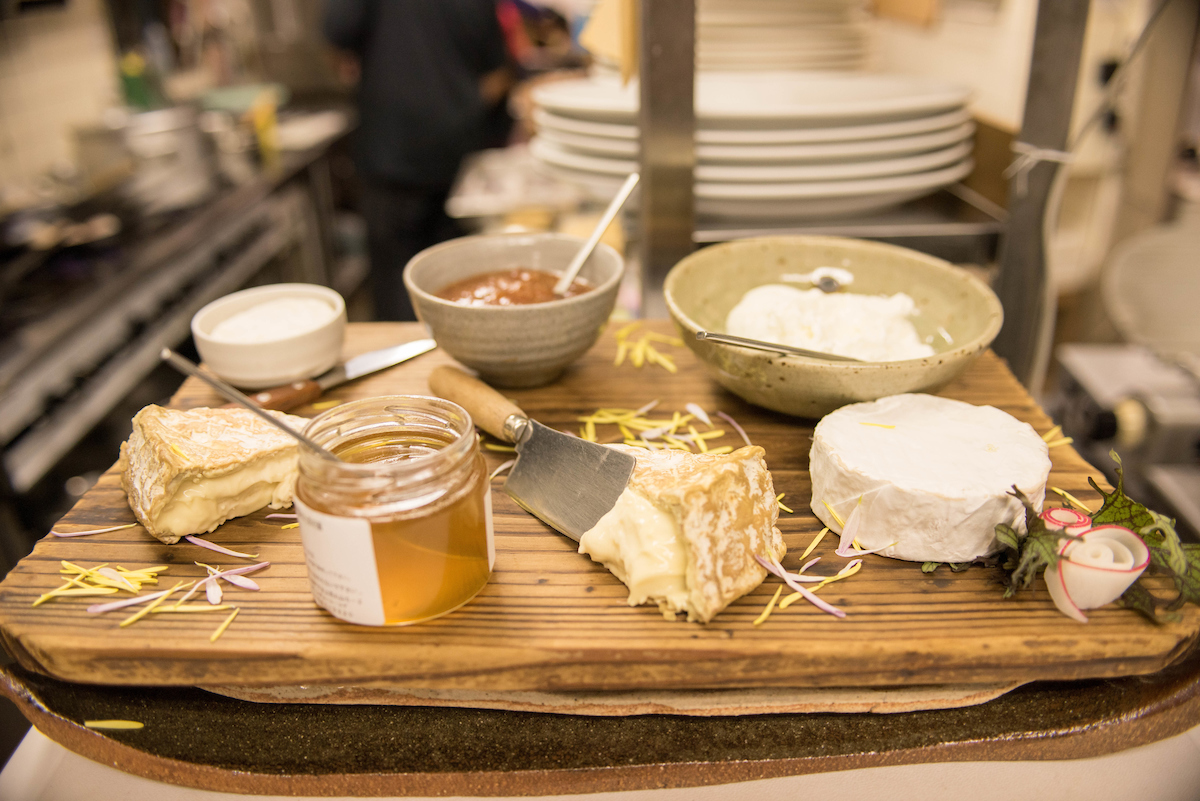
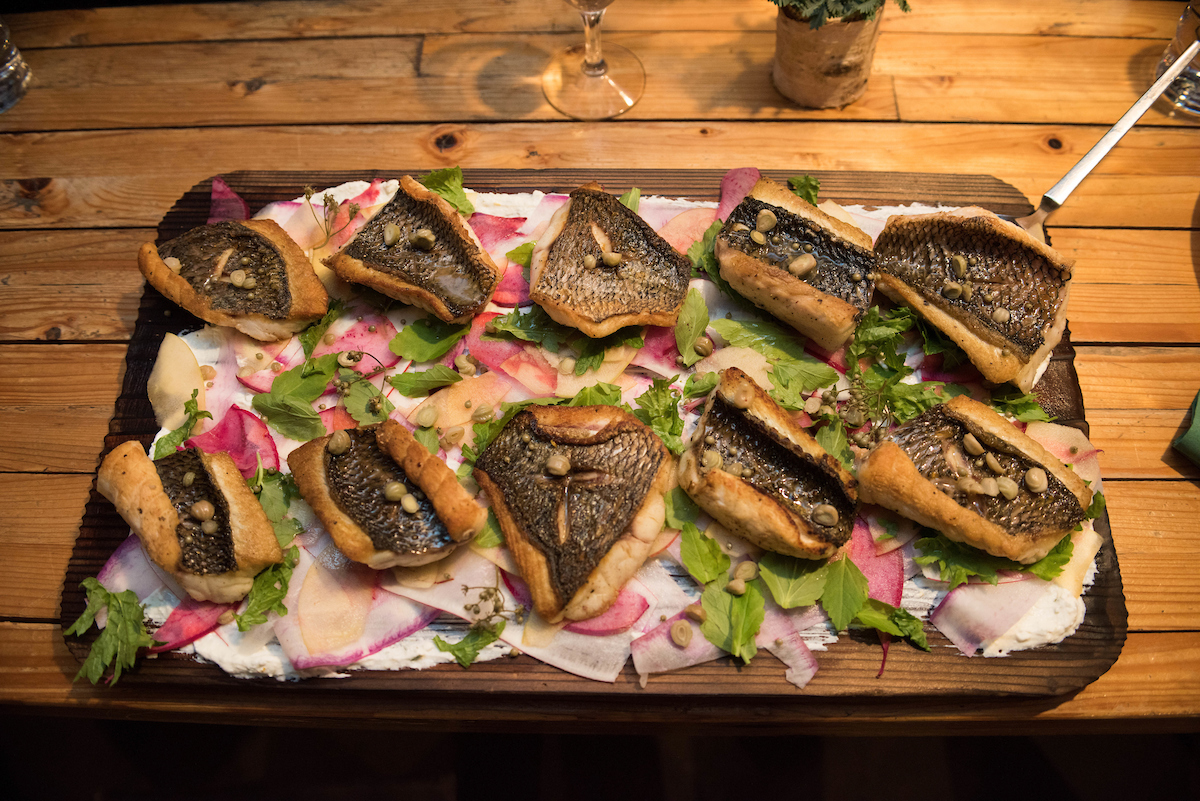
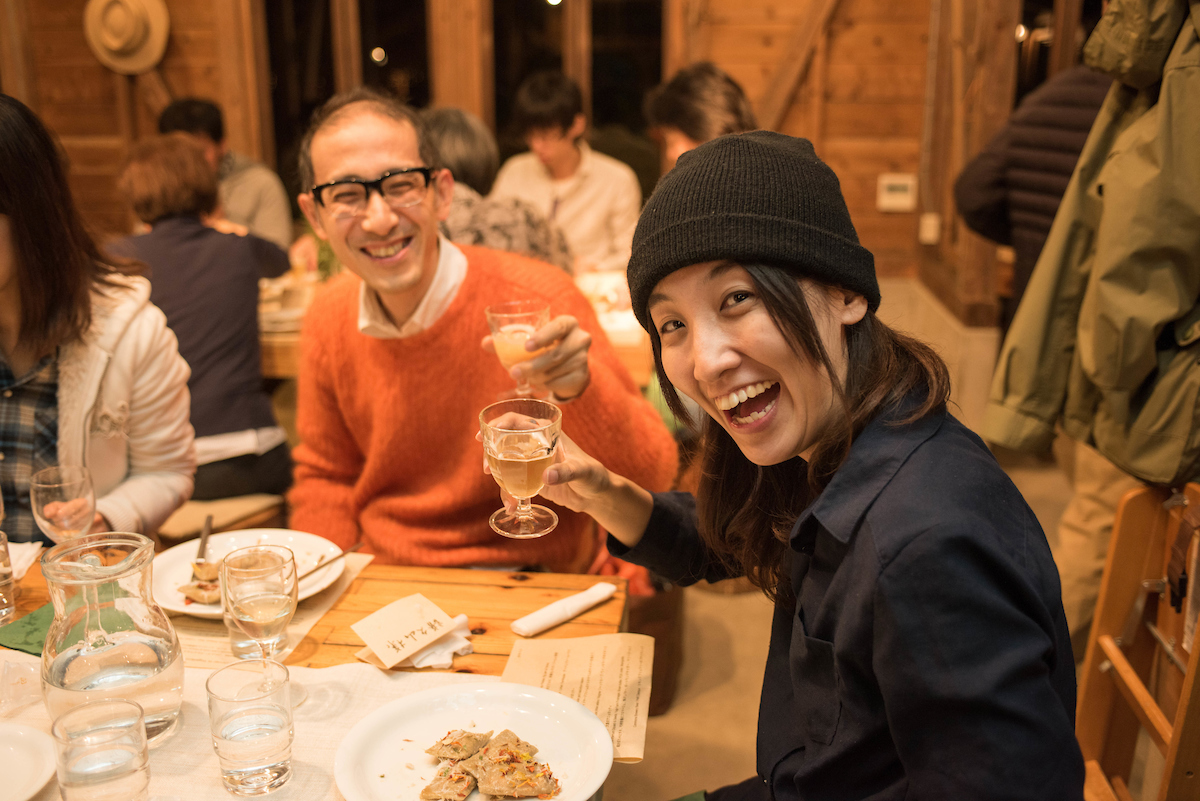
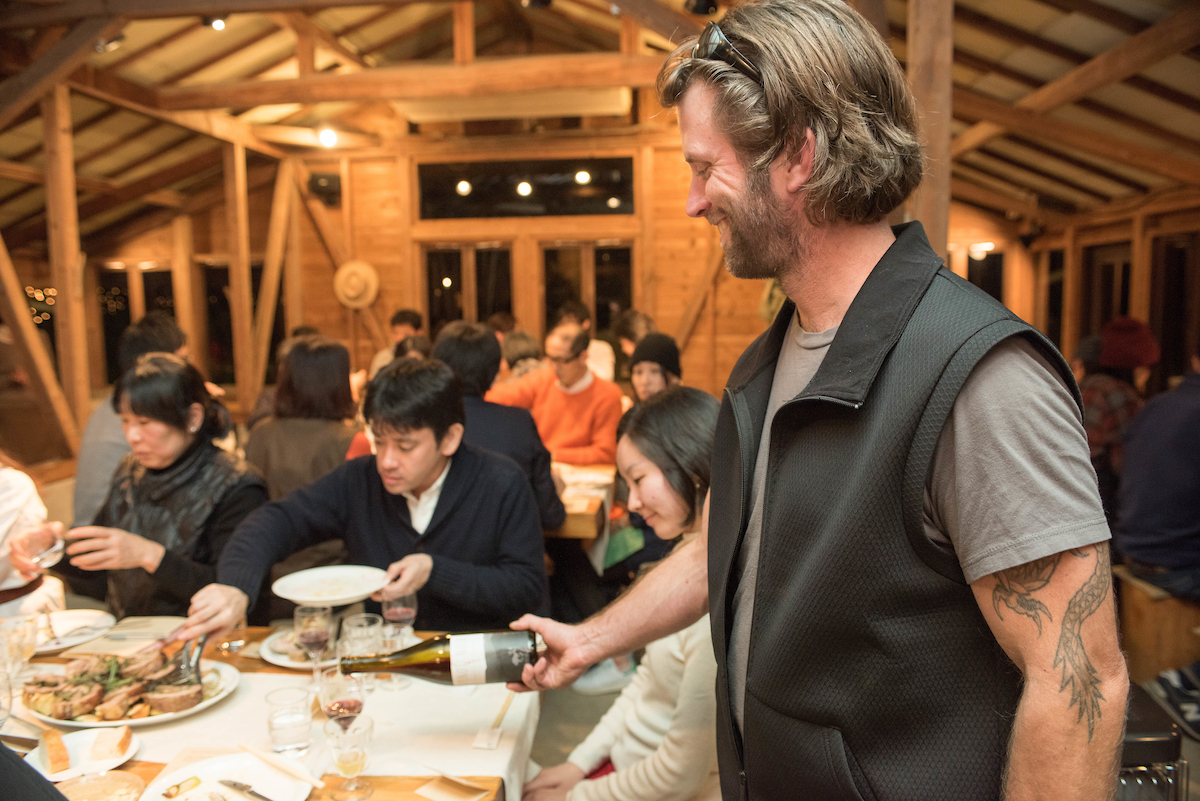

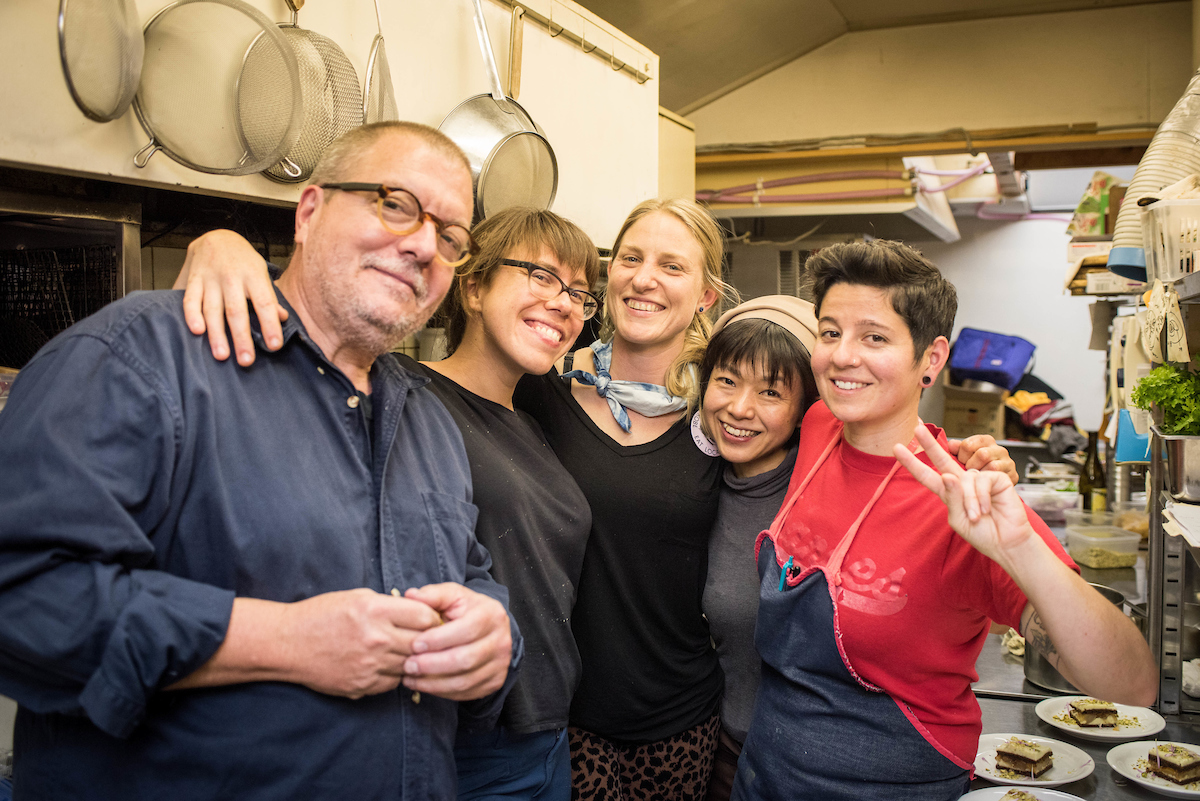
I took a lot of inspiration from the Yuge's attitude towards cheese and the education that has to come with it. In our work to introduce ramen to Americans, we find a lot of people hung up on ramen having to be perfect Japanese ramen. They are intimidated by the idea that they have to make a 12-hour pork bone broth. But we see the Umi Organic fresh ramen noodles as versatile and ripe for experimentation. We are taking up the spirit of creativity that the Yuges have brought to their cheese production with all of our recipes, pop-ups, farmers market dishes, and events.
While in Kobe, Stacey prepared a three-course meal, plus appetizers and dessert, featuring Yuge cheeses and milk. We also spent the morning at the Kobe Farmers Market, called Eat Local Kobe, a beautiful gathering of artisans and farmers, 80% of whom are farming organically! Stacey spoke before a gathered audience, and we all took turns meeting with farmers, learning their stories, and tasting their food. These are true revolutionaries. Being an organic farmer in Japan in exceedingly difficult. Labor is expensive and the national agricultural cooperative has an almost complete monopoly on distribution as well as the buying power to keep their prices falsely low. But these farmers persevere, hustling to sell direct to consumer. The market was phenomenal, and inspired in part by the organizers' visits to the Portland Farmers Market. Eat Local Kobe is now looking at models like Ecotrust's The Redd on Salmon Street and other local food hubs to try to help Kobe's small scale sustainable farmers bring their products to market. Plus, the farmers have the cutest trucks in the world, which I was depressed to learn I cannot drive in the States. All told, the market was a moving place to spend the morning.
Omihachiman and the Shiga 100 Young Women Farmers Project
Omihachiman sits south of Lake Biwa and north of Kyoto. Historically, it was a bustling merchant town, and many of Japan's most successful businesses stem from operations started in this village centuries ago. In Japan, the Omihachiman merchant ethos is well-known: Do well by our employees and customers, and we will all thrive. Omihachiman also happens to sit in a prolific agricultural region. Our host, Darren Damonte, introduced us to Satomi Hirobe, a young woman who runs her own farm, 100 Seeds, where she grows rice, lotus roots, and field crops. She makes her own miso and value-added products, and sells online to discerning customers. She is a bad ass. She does everything by hand, either herself or with community members, including threshing rice. Not born into a farming family, Satomi followed her love of food into the field. She talked with old-timers and set off on her own.
Satomi is now part of a grassroots project to bring together the small cohort of sustainable women farmers in the prefecture and organize a movement to grow the share of women farmers. They call themselves the Shiga 100 Young Women Farmers Project (follow them on instagram at @shiga100girlsfarmers), and they help each other through marketing and education. Next up, they are seeking funding to support other women farmers.
The day after the election results were announced, in a stupor, we met at Satomi's farm to meet with this cohort and try our hand at harvesting lotus roots. Most farms do this at a large scale and use mechanical harvesters, but Satomi continues to do this by hand. She has even coordinated tours of business men and school children to harvest lotus roots for her because it is no joke. We pulled on plastic pants and rain boots and headed for the fields, where Satomi showed us her threatening short-handled fork for pulling aside the clay earth. Her system is to dig about a foot deep with a shovel, then use the fork to pull dirt (but really, it was clay!) from each side to create a larger pit, and then use hands and trowel to feel out a lotus root. Once you've found one, you don't want to break it, so you carefully push aside dirt, following it to find its connecting roots, careful never to pierce it, periodically digging your trough longer along the trajectory of the roots, until the connecting lotus roots come to an end. The only way to not sink into the clay is to be on hands and knees. For a while, it felt hopeless. Every root I found was small, or broken, or there was nothing. My legs got suctioned in the clay and it took me a minute to slowly wiggle out. But then we hit a motherlode, and I lost myself in the mud.
Lotus roots go for about $5 per pound in Japan. We all walked away with the feeling that each lotus was precious, and that price point is absurd. That's always been my experience farming: If you put your own hands in the dirt and body on the line, the value of food becomes crystal clear. We don't pay enough money to hard working farmers. We seem to think low-cost food is a given, rather than recognizing how much history and labor each piece of food brings with it.
After harvesting together and washing off in a nearby river, we ate a delicious meal cooked by the farmers of miso soup, rice balls, pickles made from a very uncommon melon, roasted and candied sweet potatoes, salads, and hot sauce provided by one of the women farmers, who grows a pepper native to the region called the Yahei pepper. It's a brilliant orange, spicy like a habanero but long and thin like a Thai chile. Throughout our trip, we collected organic, open-pollinated seeds for the Culinary Breeding Network, and I am excited to grow some Yahei in my garden this coming year.
We followed this meal with a round table nearby, where each woman told her story and we told ours. The dominant experience was that these women had never considered farming, even those whose parents had been farmers. It's a male-dominated field and people have lost a sense of hope. But life in the corporate sector was dissatisfying, or a family experience opened their eyes, and they found a new sense of purpose in farming. These women have to work hard and find their own markets, but farming has given them joy. They see themselves mirrored in each other and know that they are building something bigger than themselves. Their success will grow with the success of others like them. And so they are working to grow from ten women to one hundred women farmers in Shiga Prefecture, knowing they are in this for the long haul. They are fierce but funny, loyal and loving. I laughed my ass off with them. I hope to return and work side by side with them in the future.
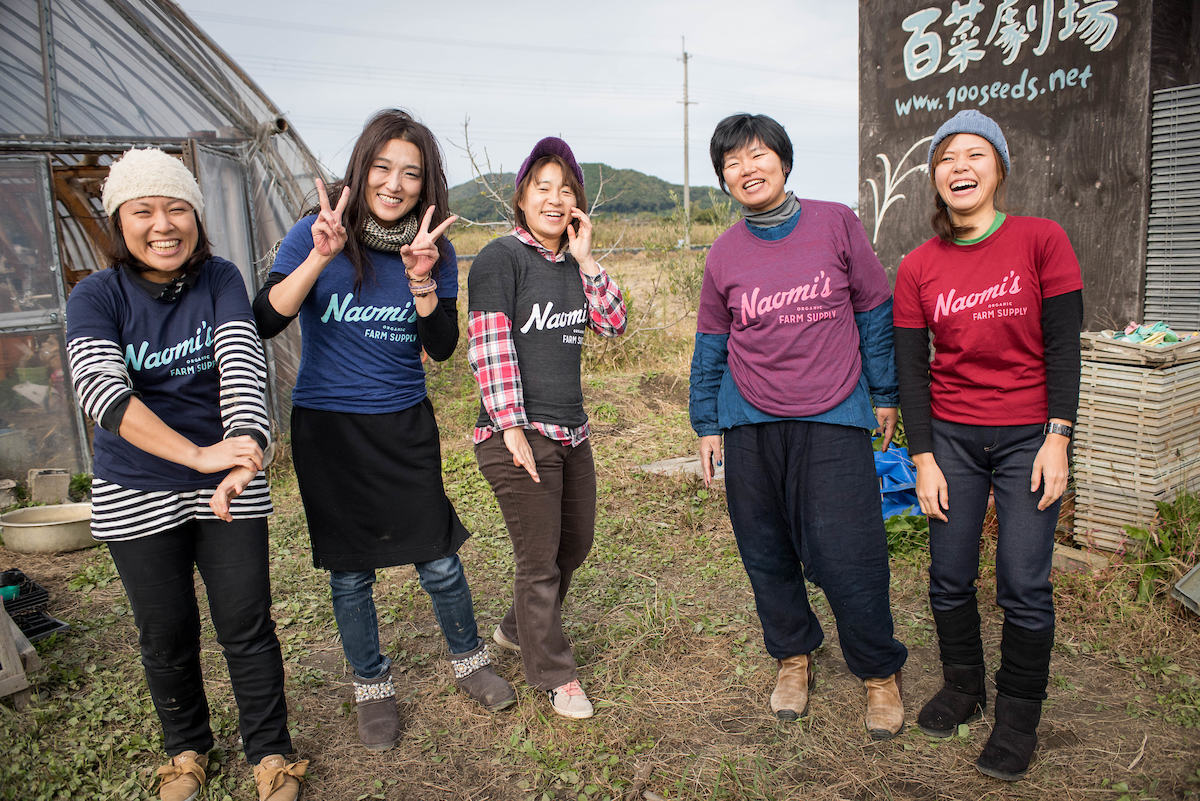
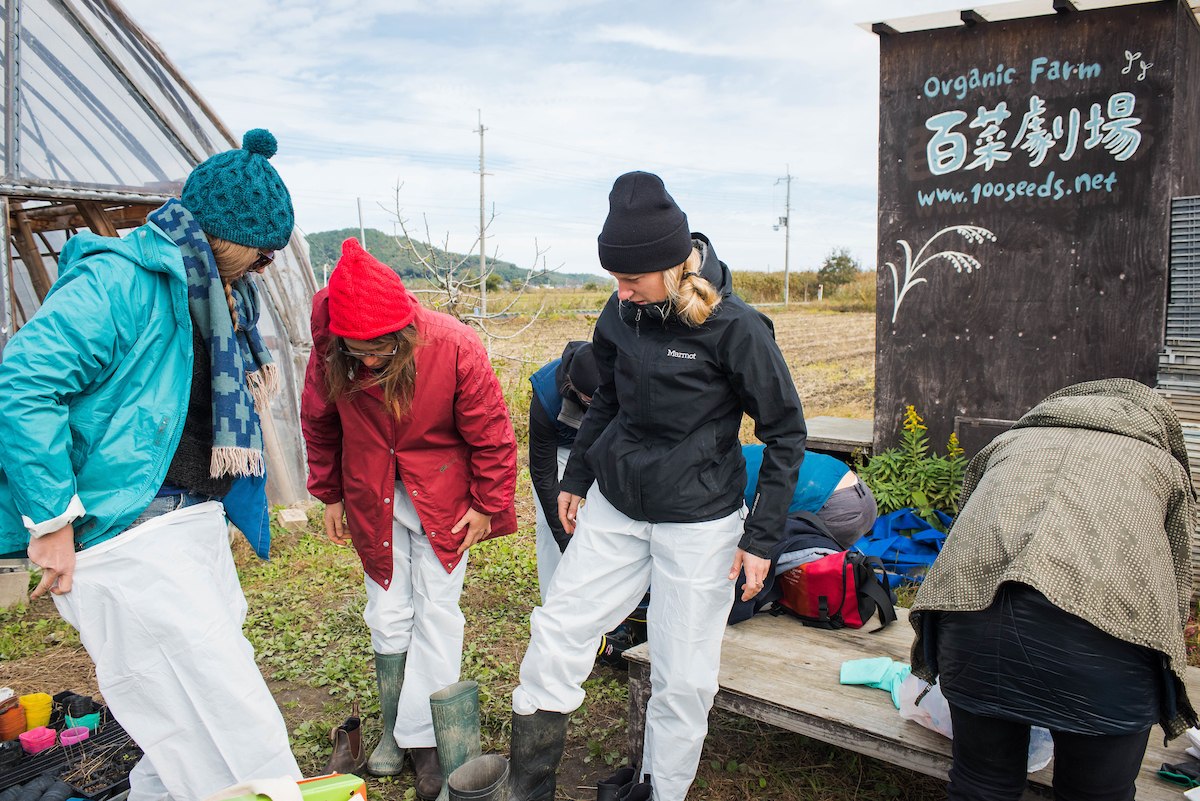
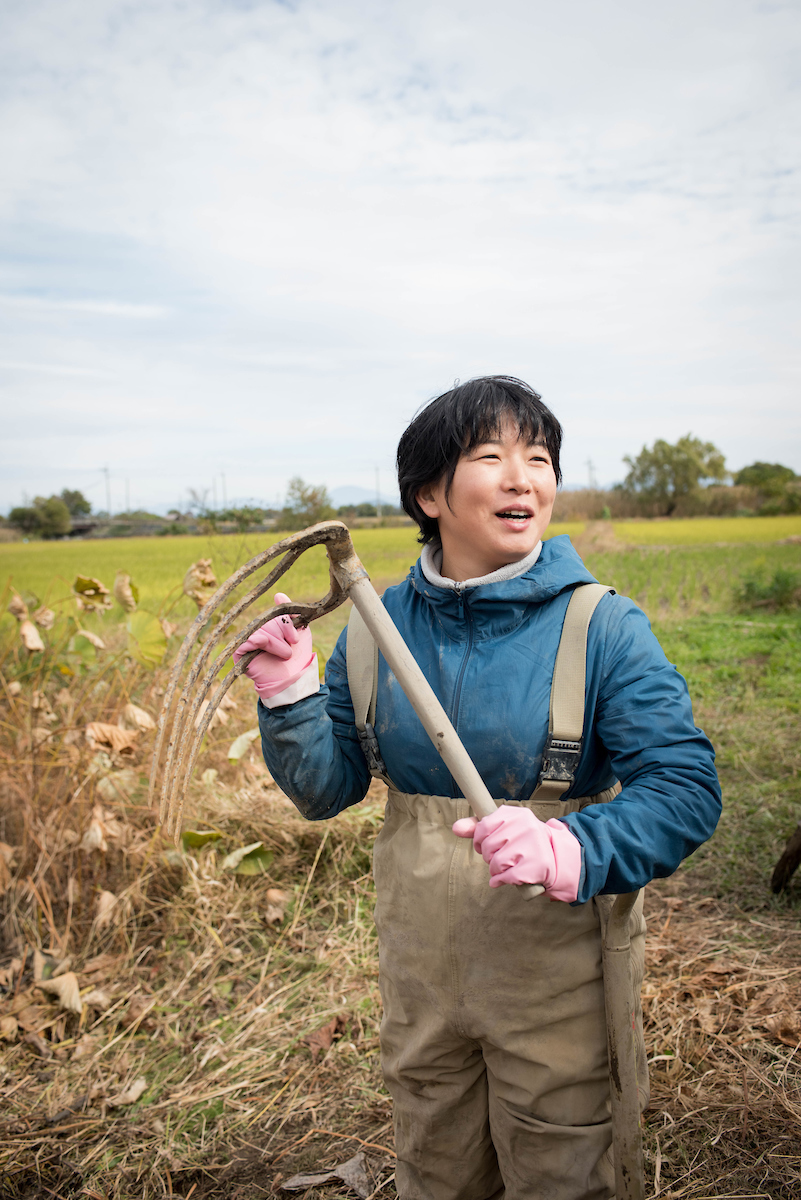
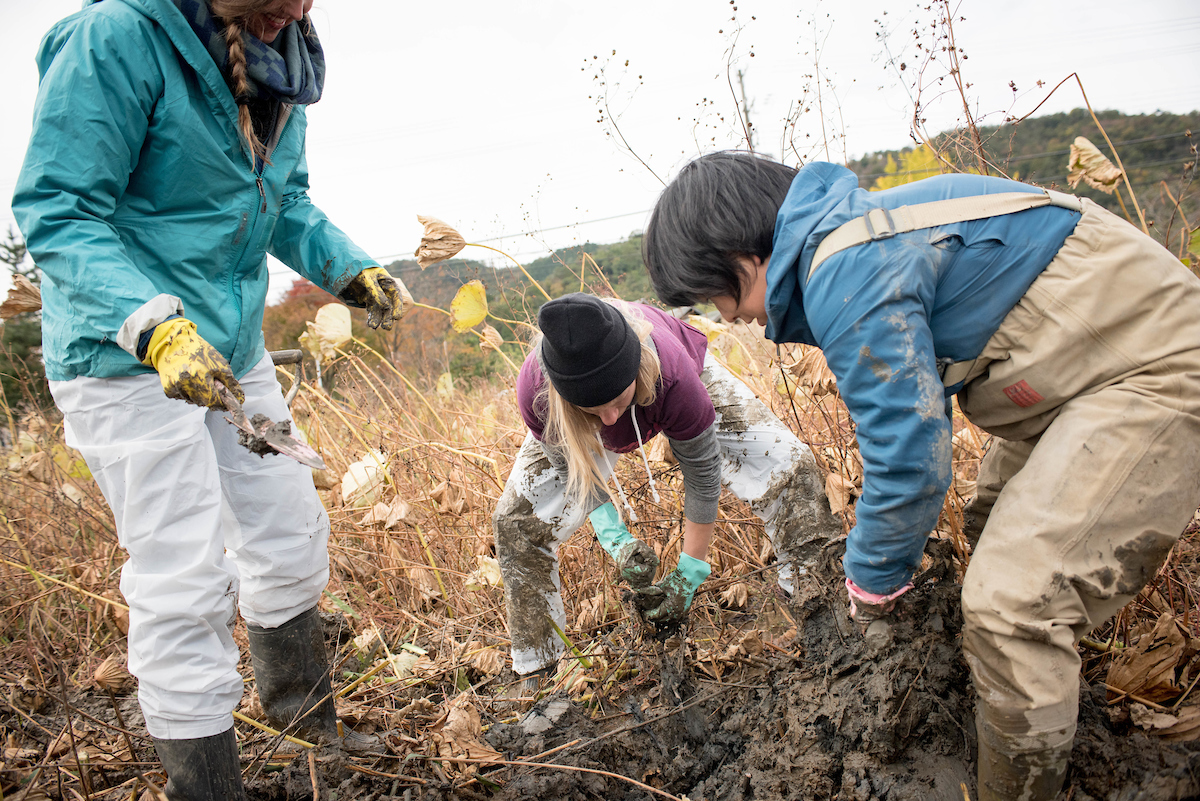
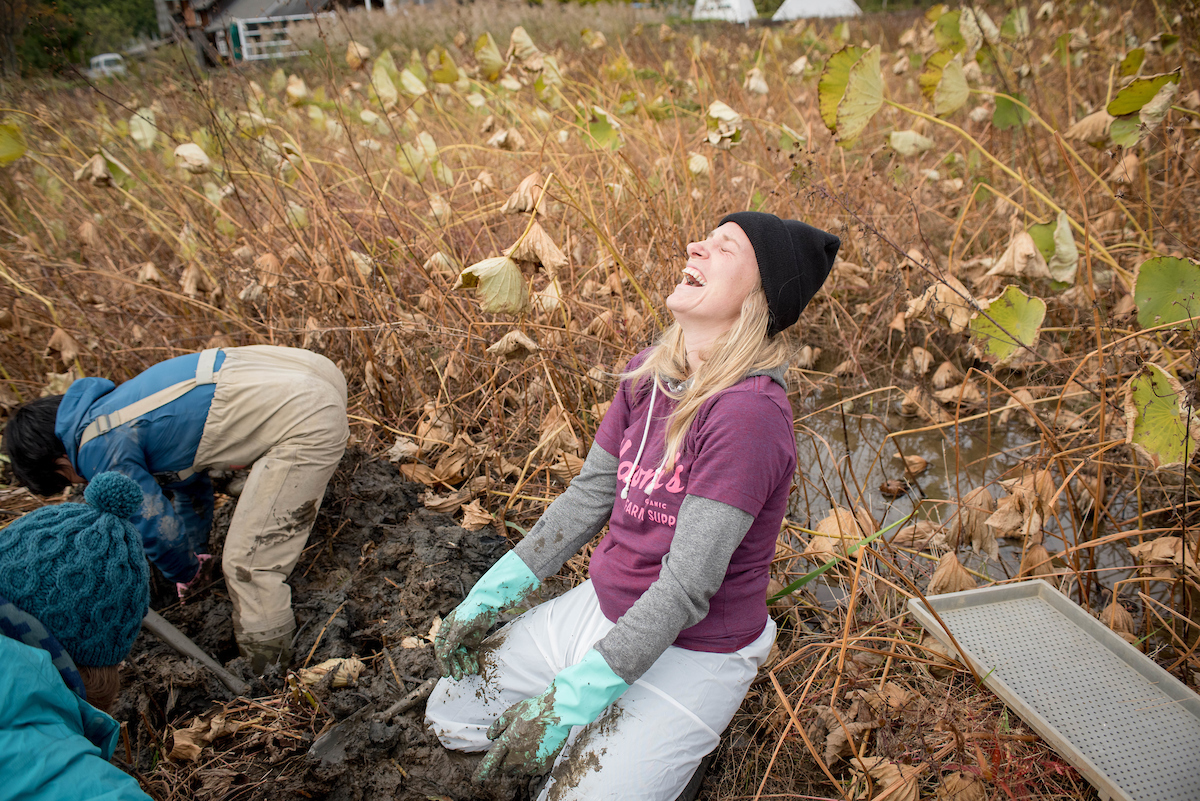
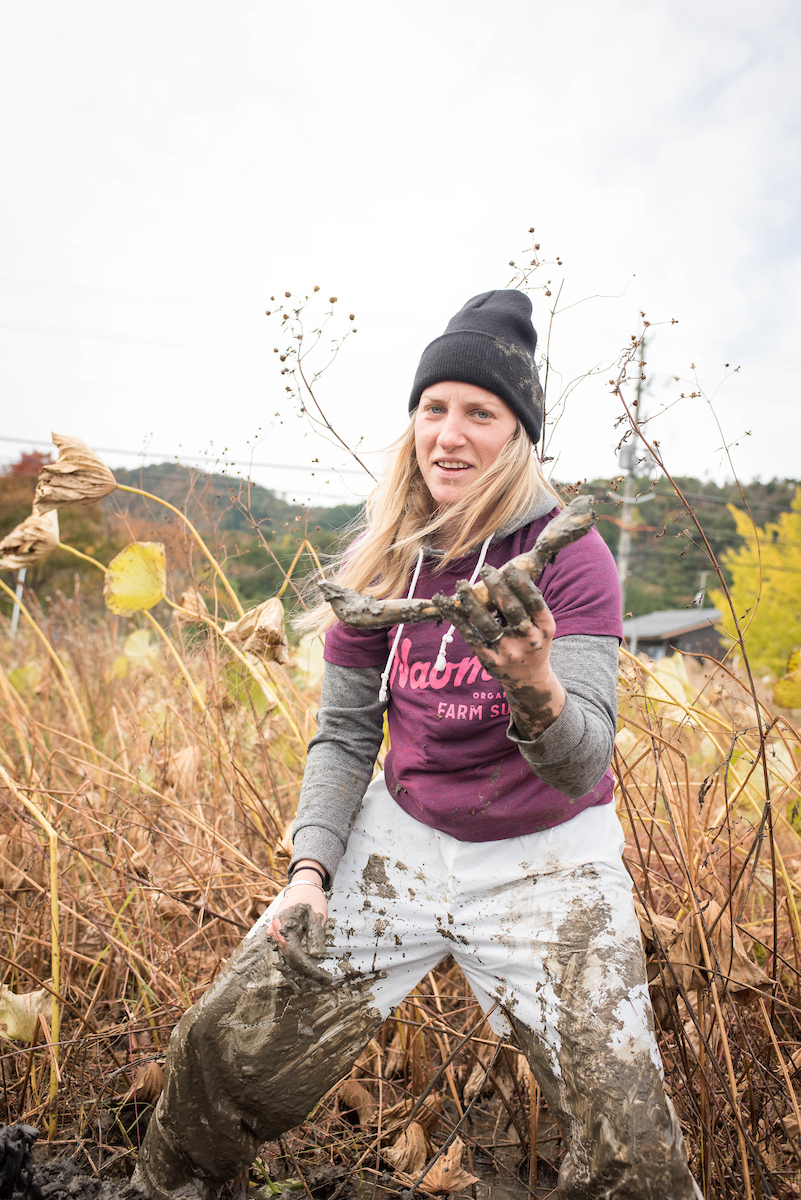
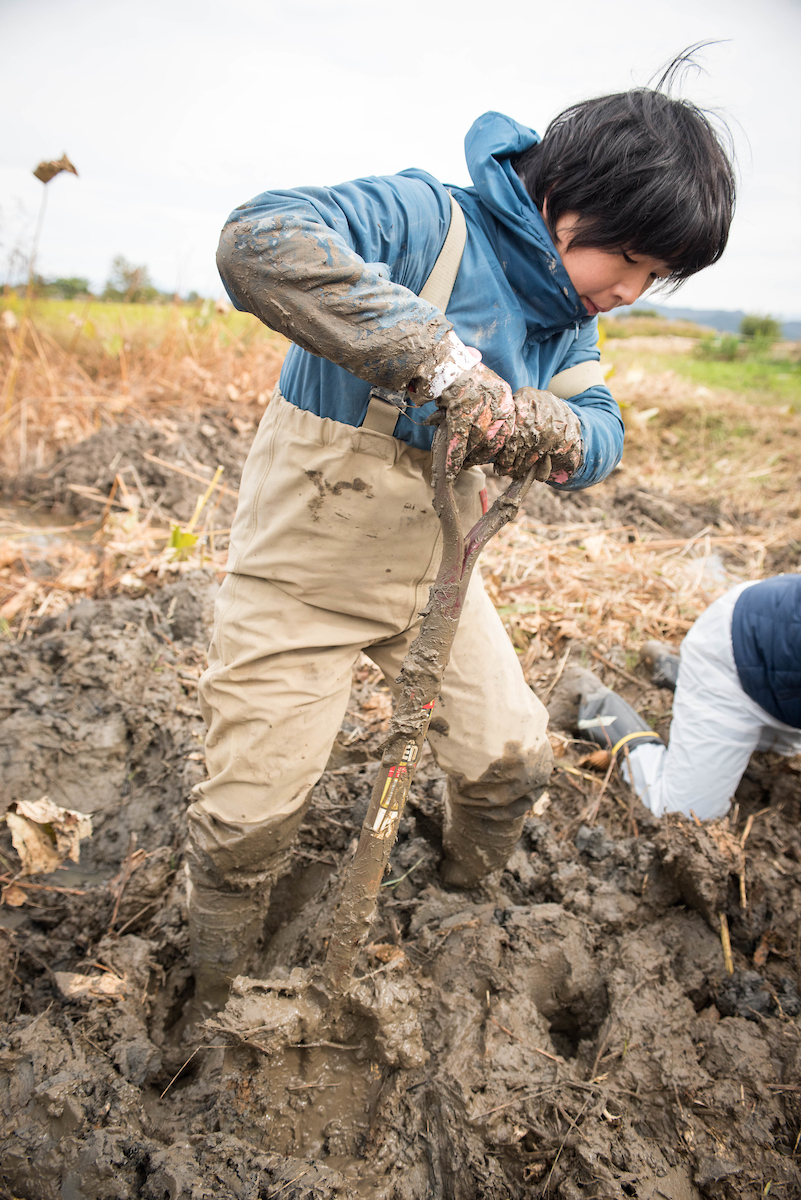
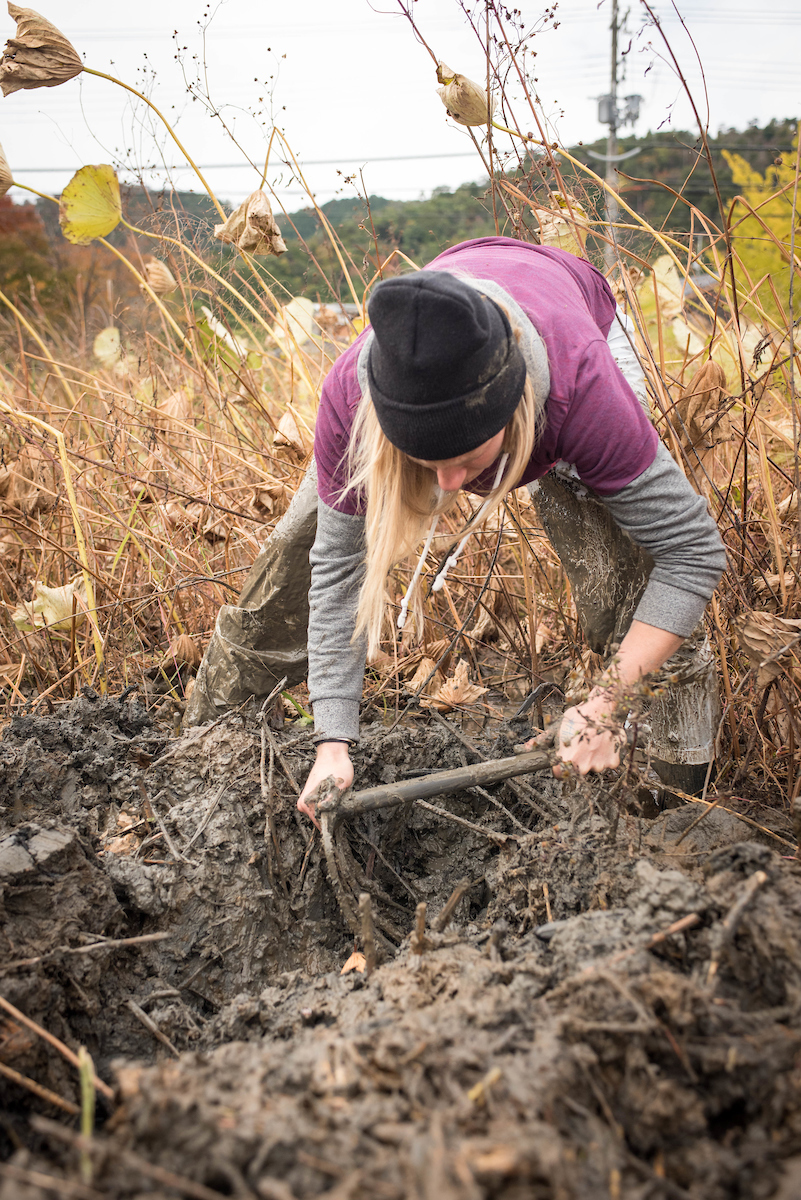
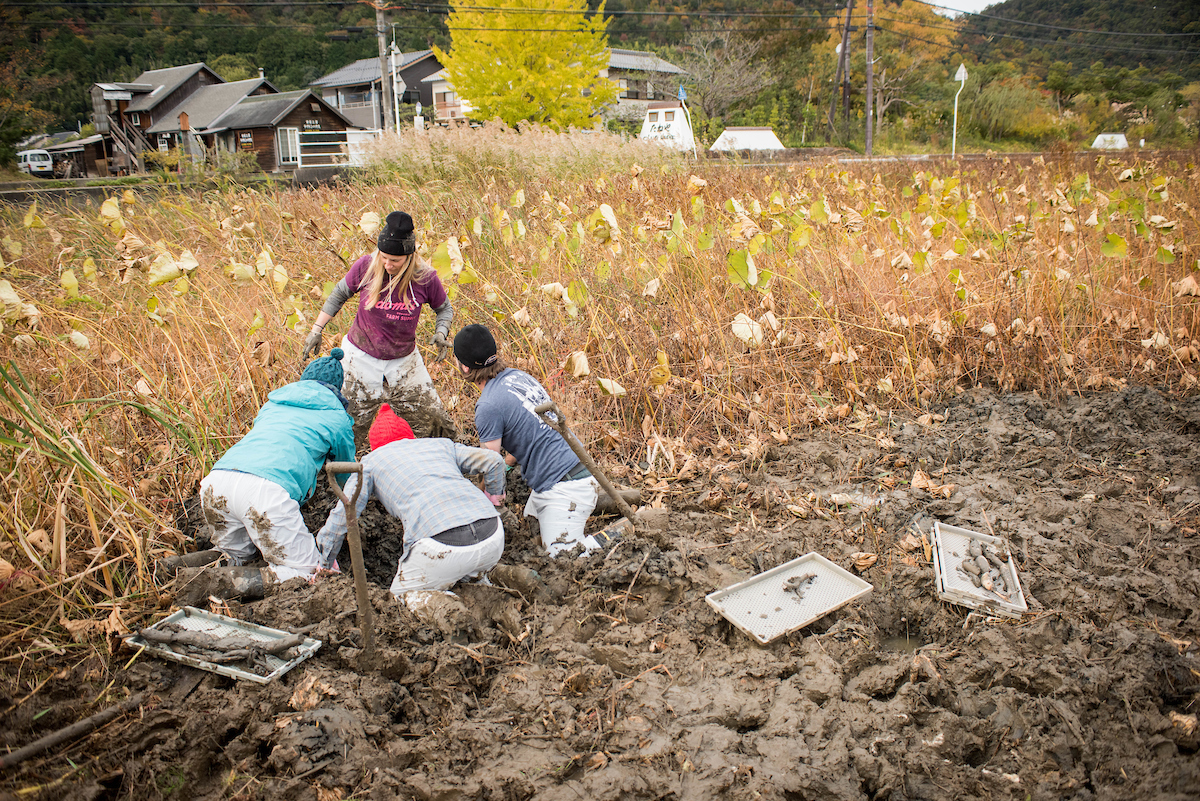
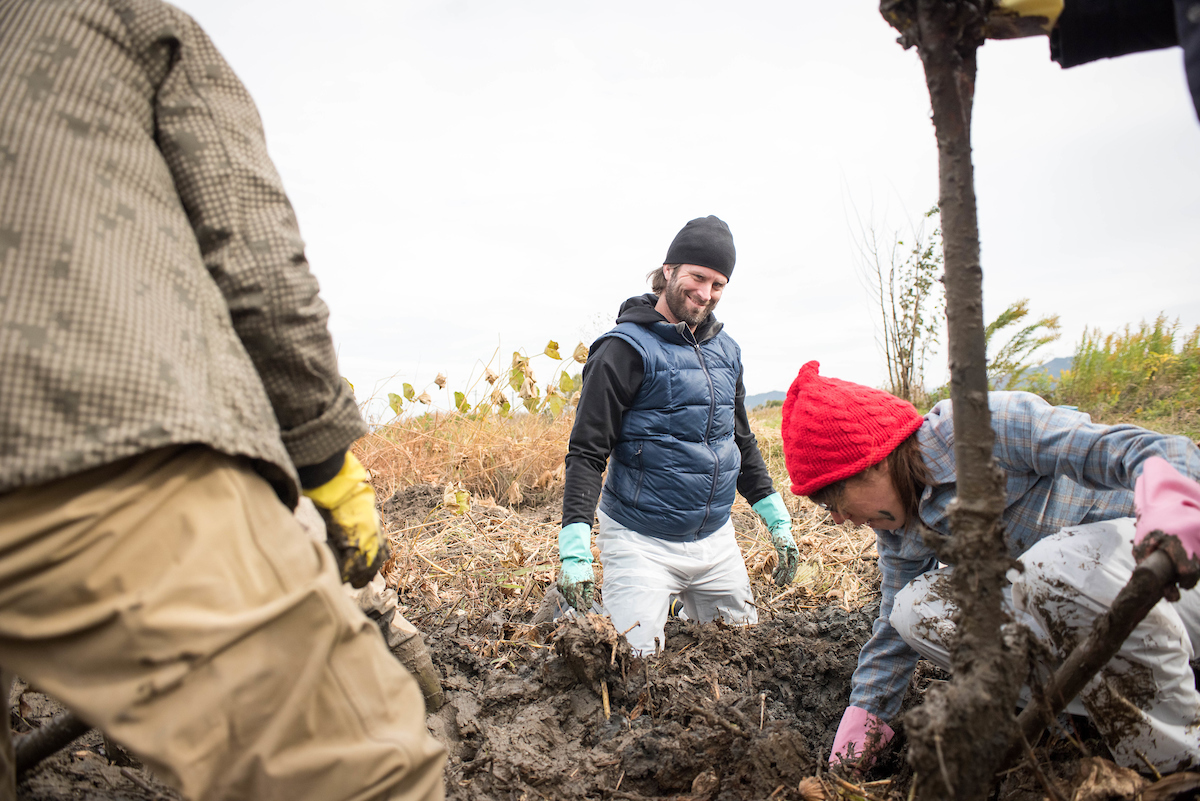
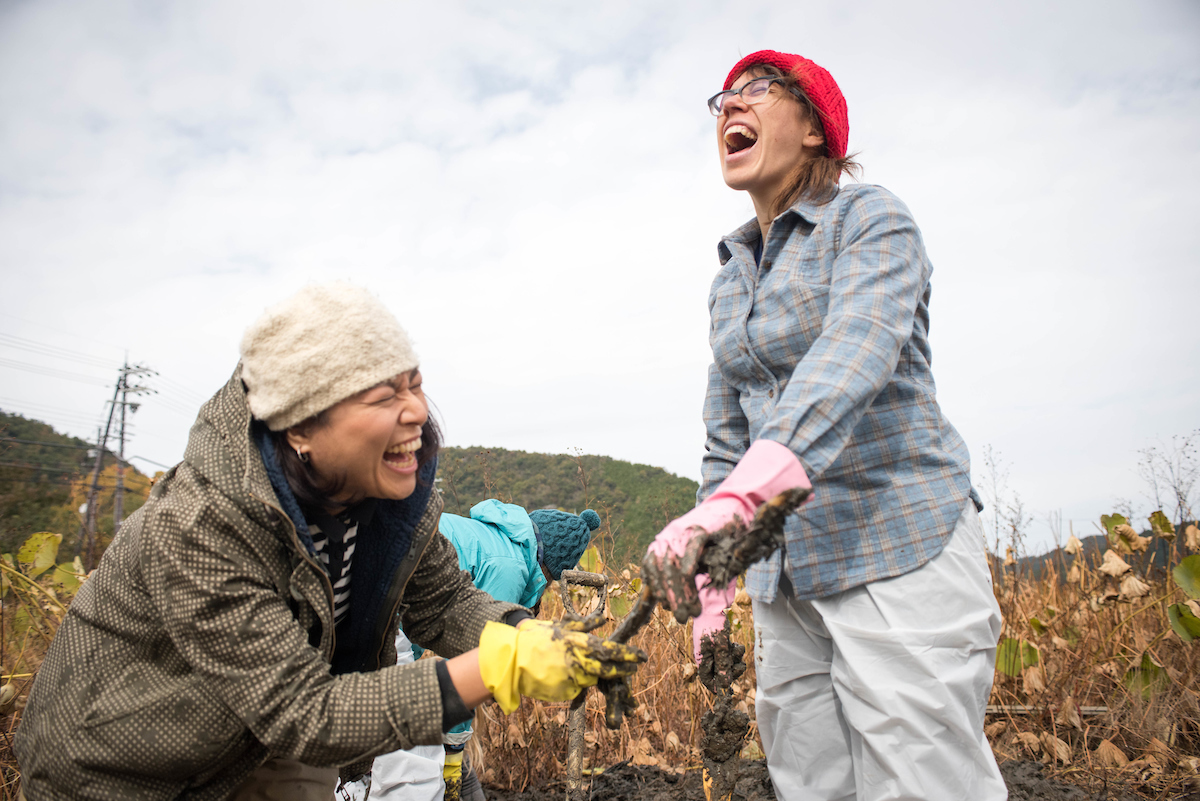

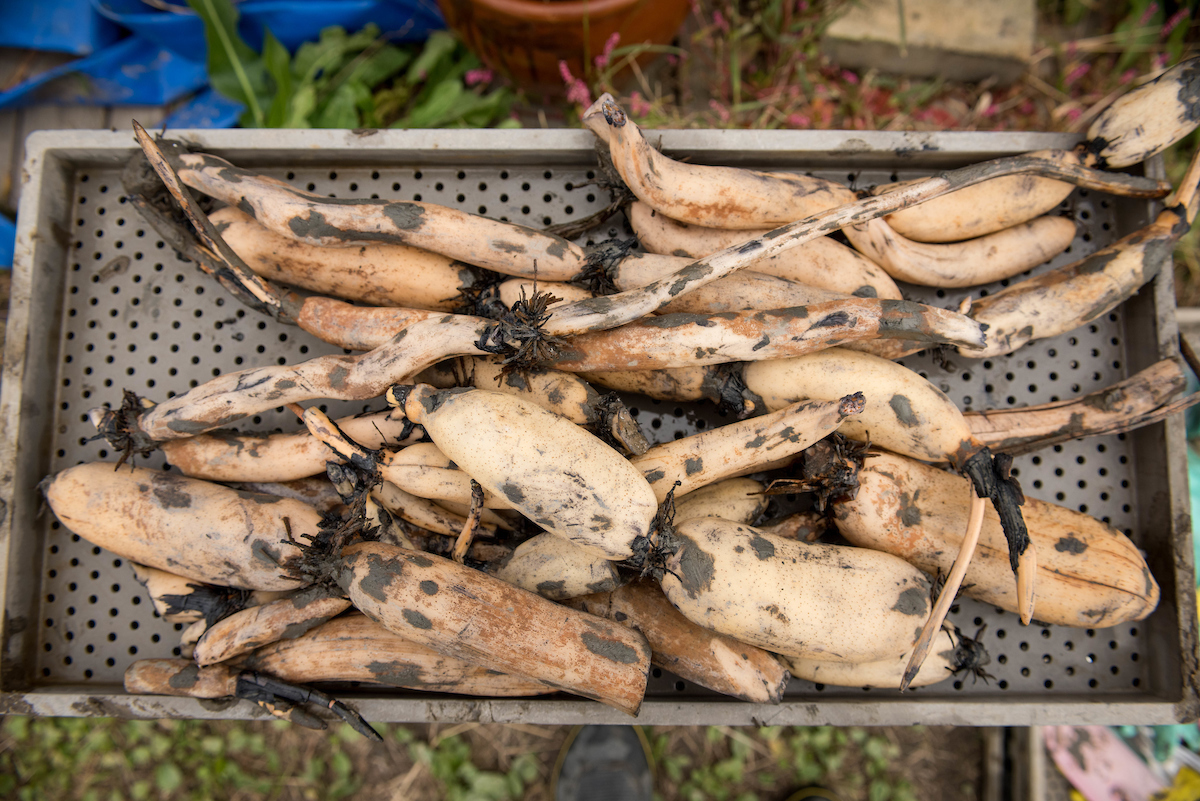
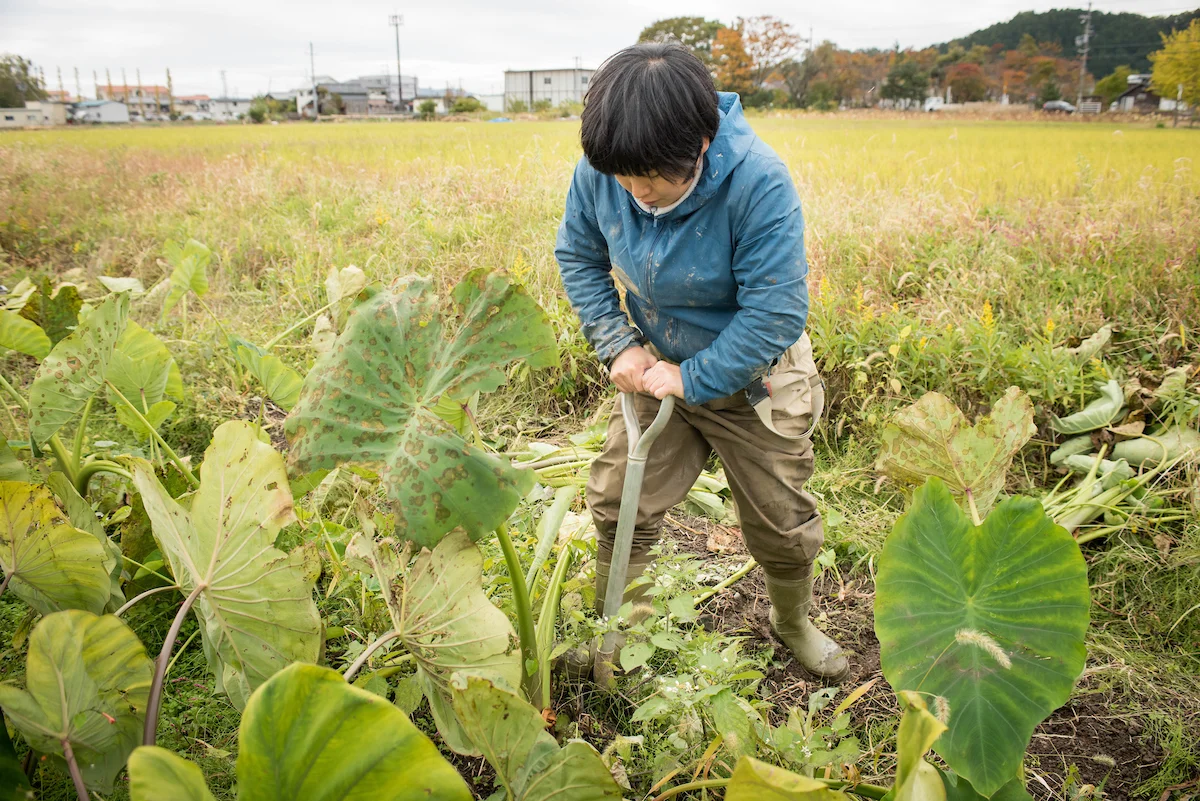
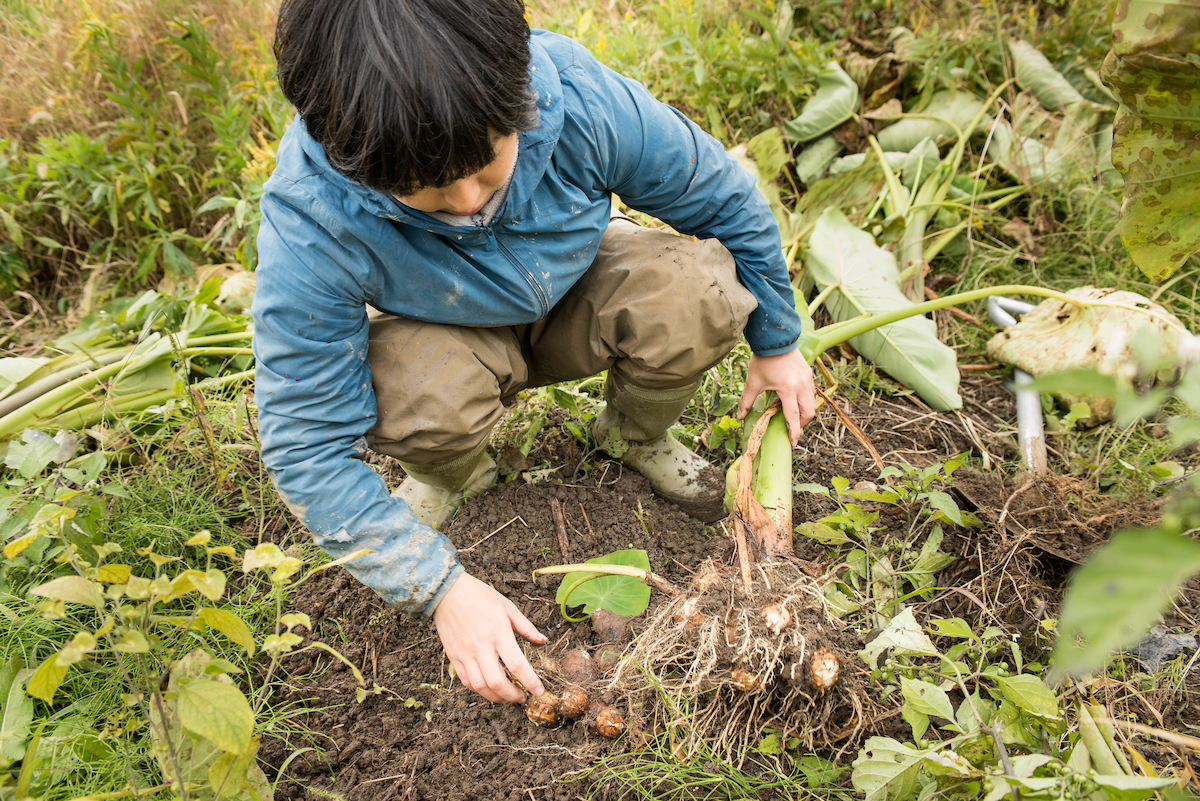
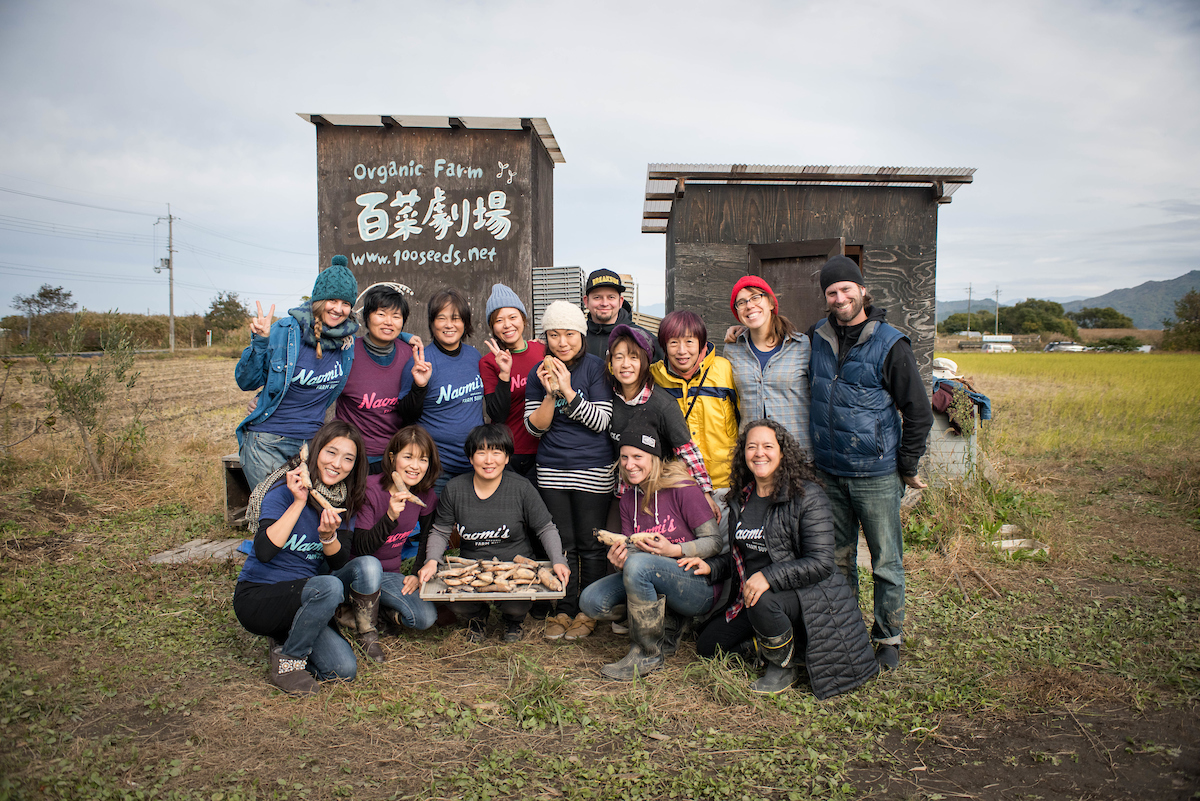
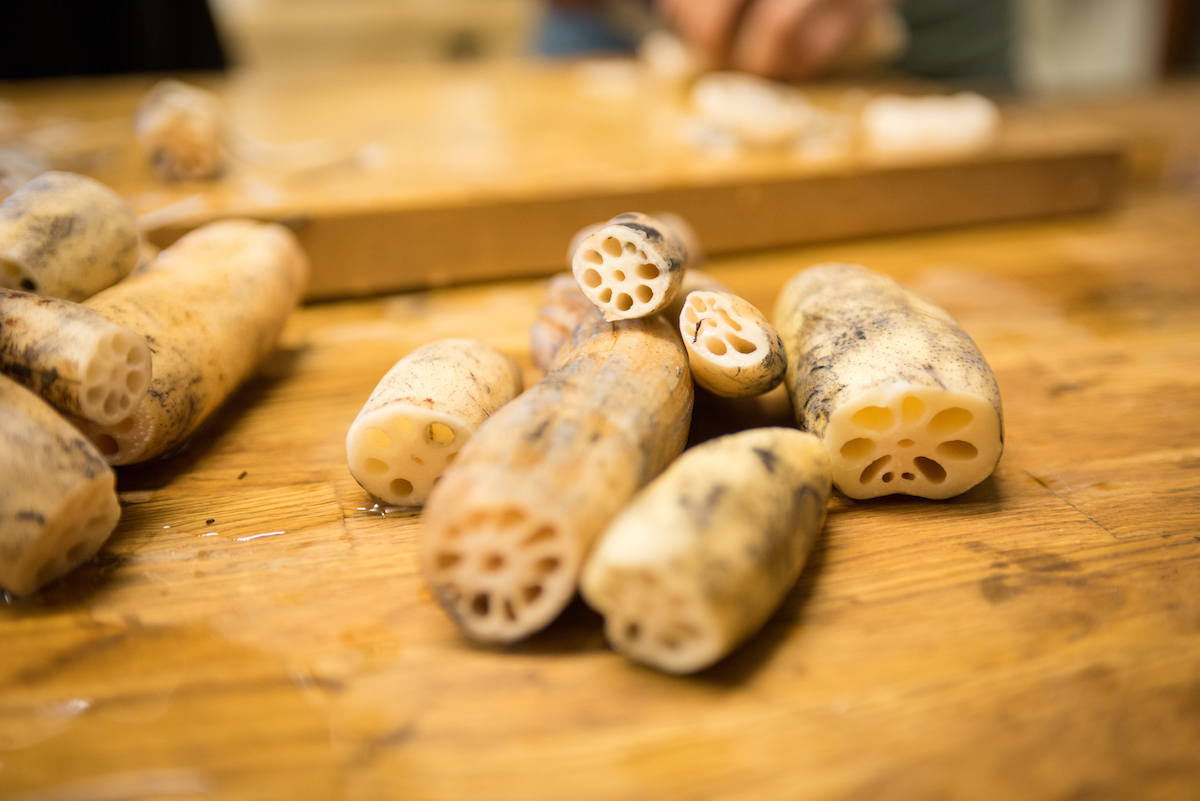
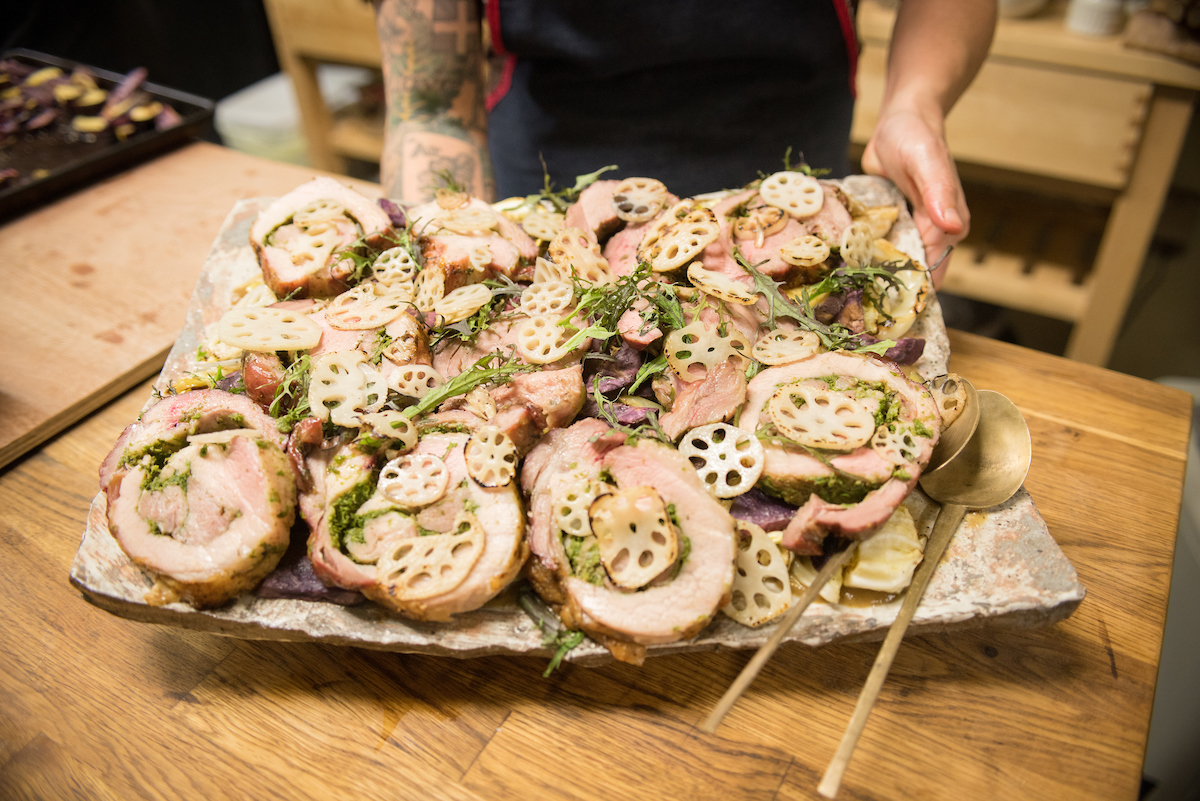
Bistro Damontei and the Seed to Plate Dinner 2016
Darren Damonte and his wife Miwa live in and run Bistro Damontei in Omihachiman. The name is a Japanese play on words on Darren's last name. Darren is not only a talented chef but a gifted potter, and much of the food he prepares in his stunning establishment is inspired by how his imagination relates to what's available locally with his ceramics. Raised in San Francisco, he found himself living in Japan since the late 1970s. He played an unbelievably generous host to us, introducing us to local farmers, sharing his kitchen, sheeting our pasta, ordering fresh fish and meat, feeding us well at night, shepherding us to the local onsen (hot springs), and translating with gusto. His relationship with Stacey served as the backbone of this trip, and our meal in his restaurant brought out our brightest spirits and deepened our relationship with the women farmers of Shiga.

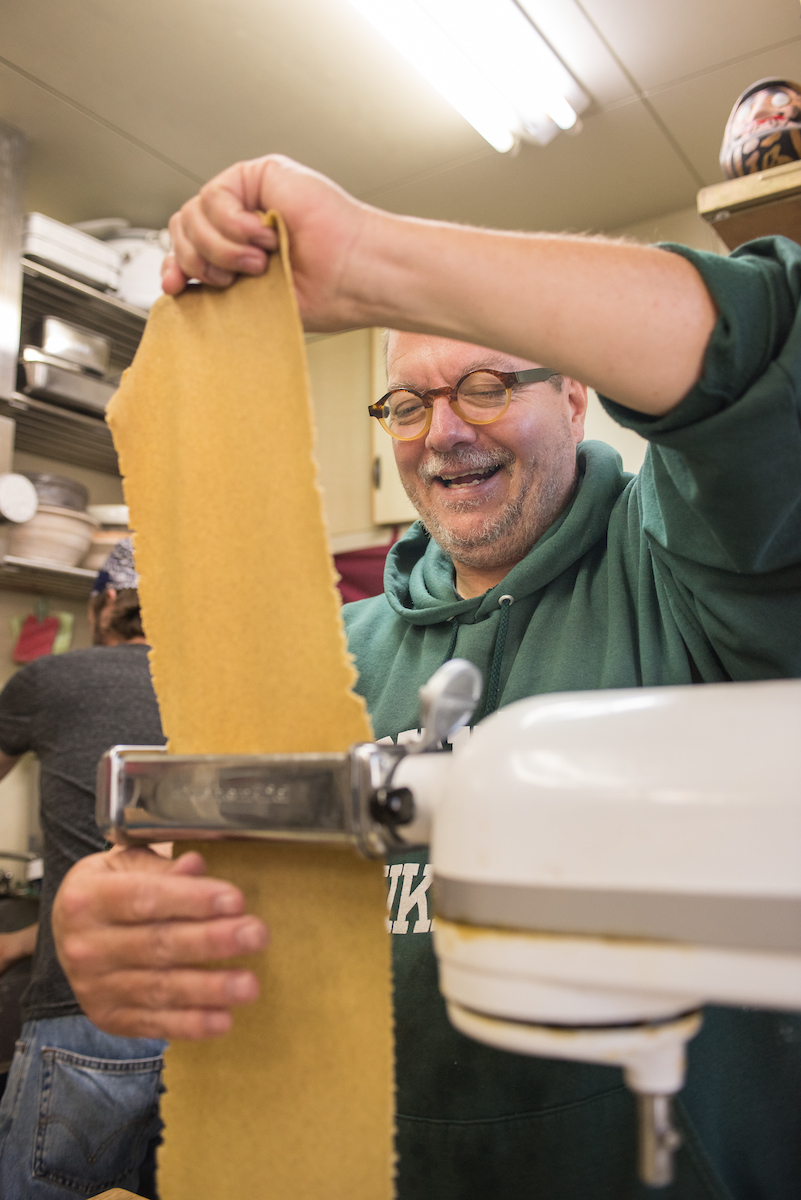

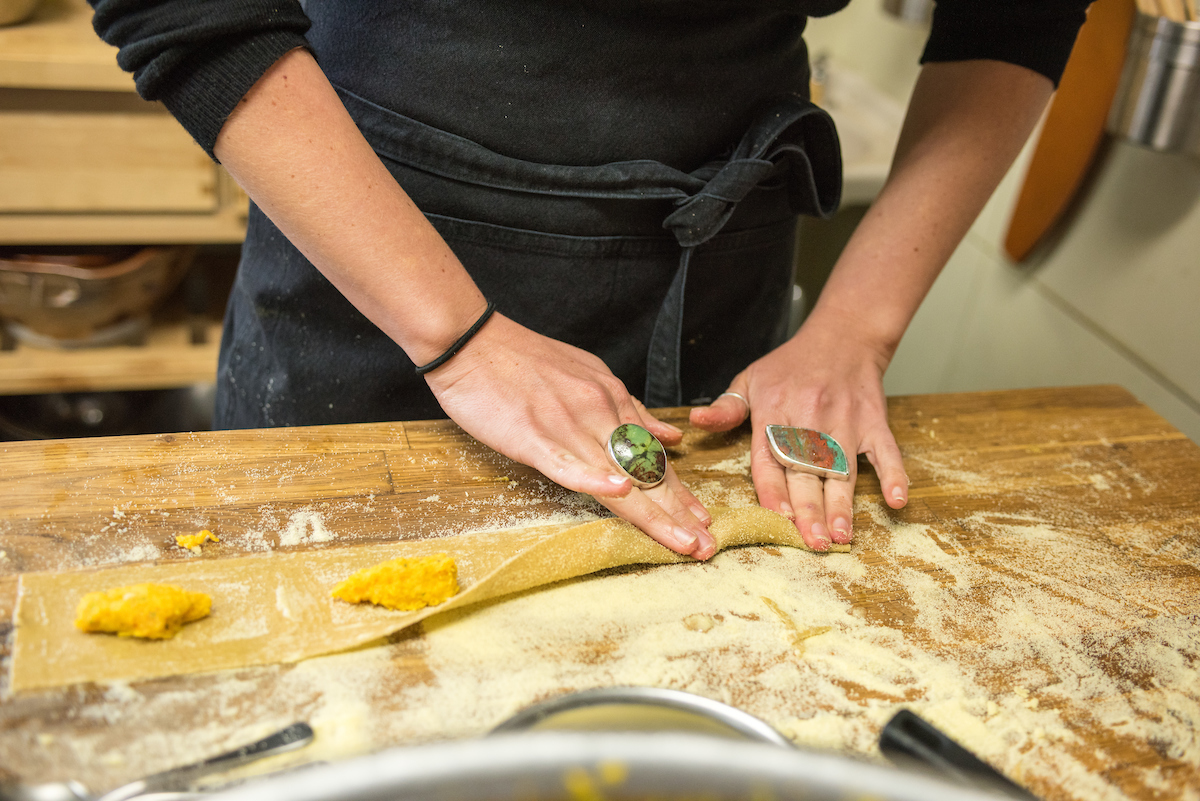

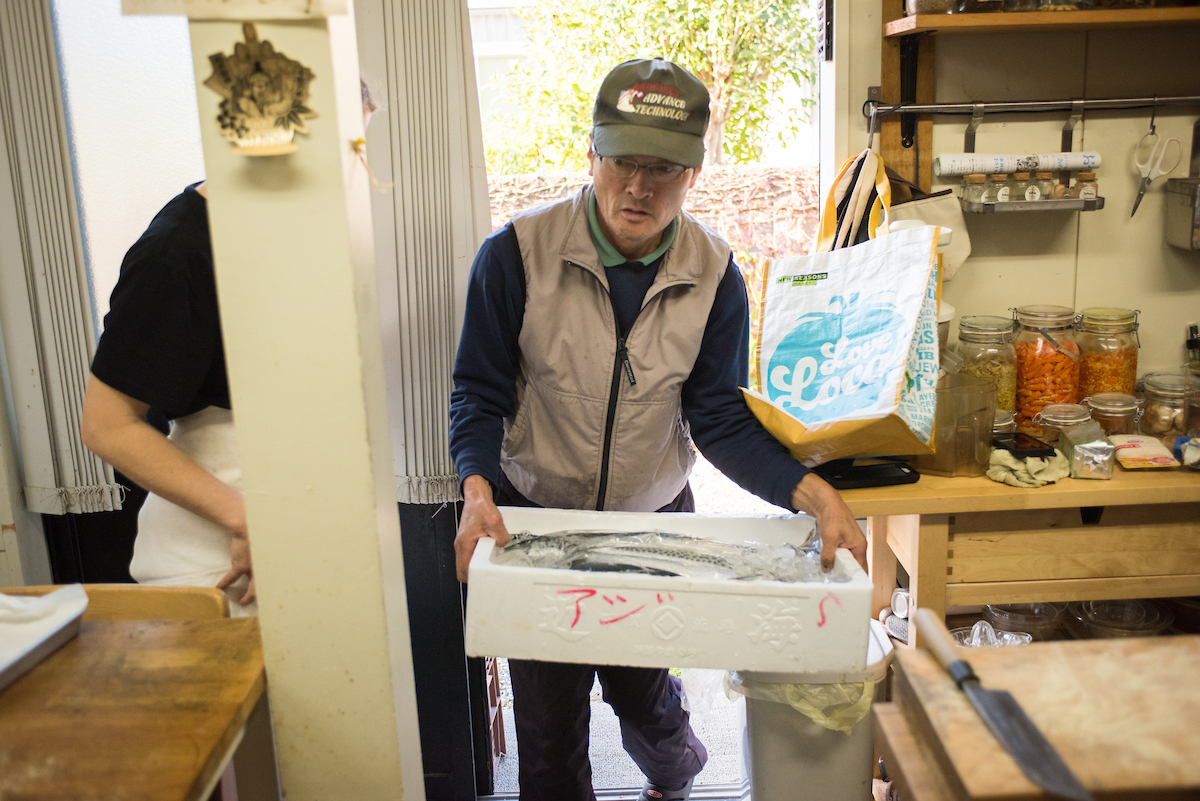
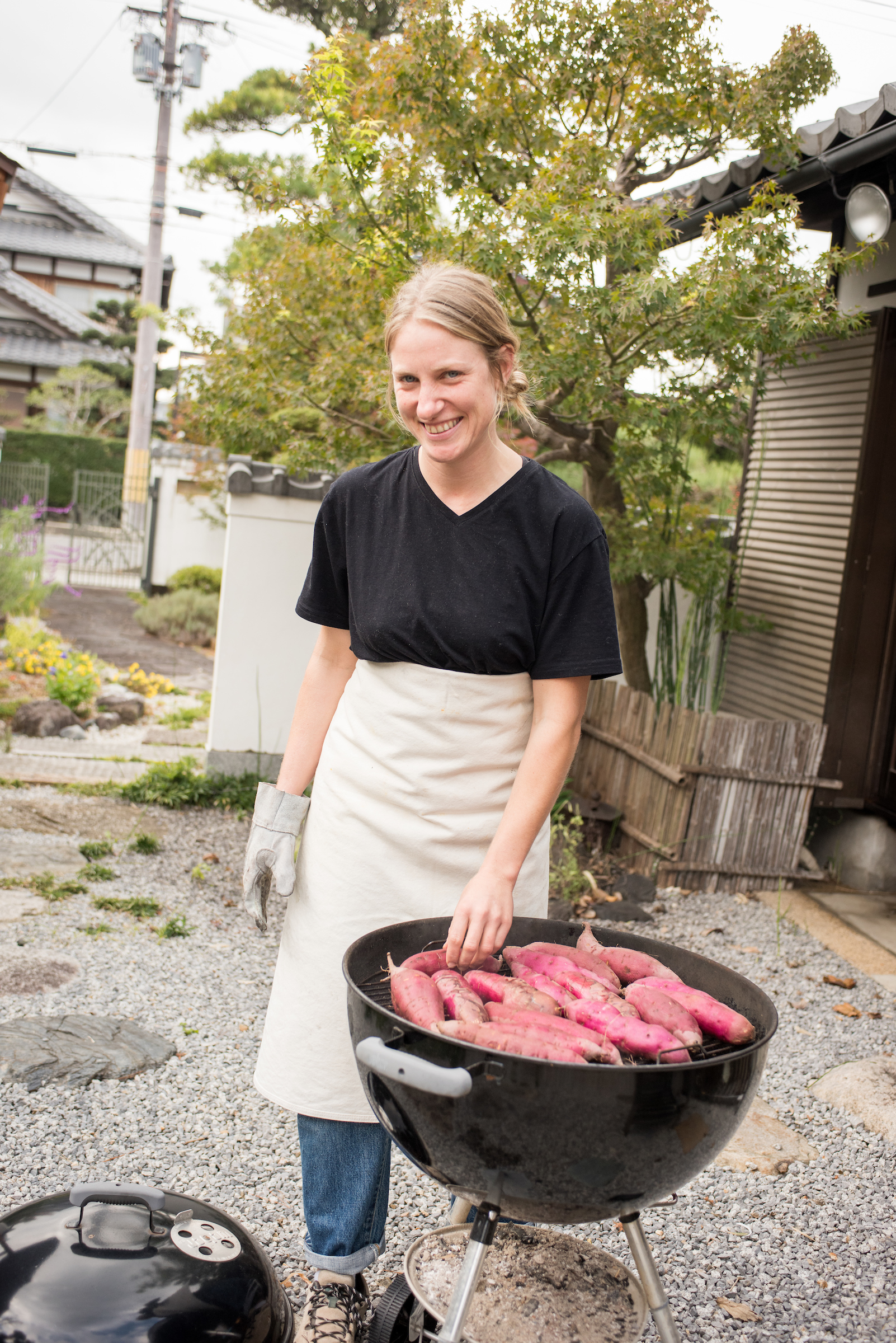
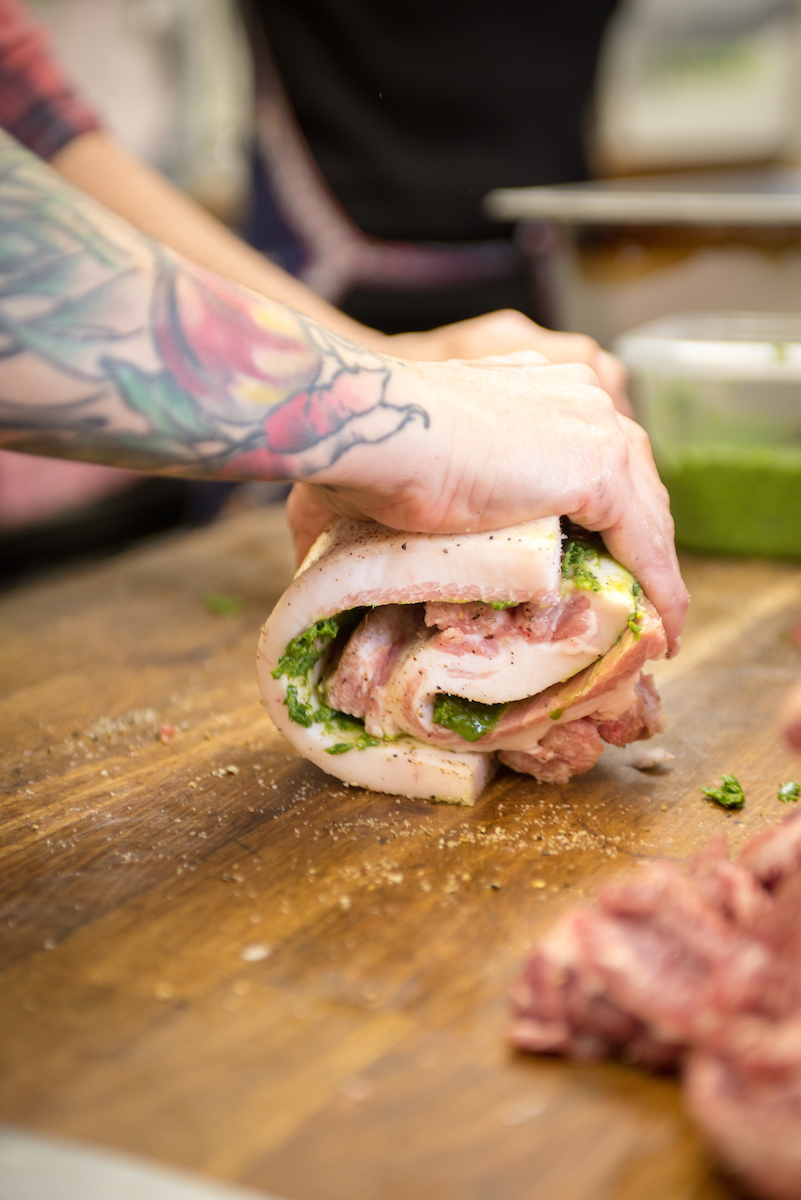
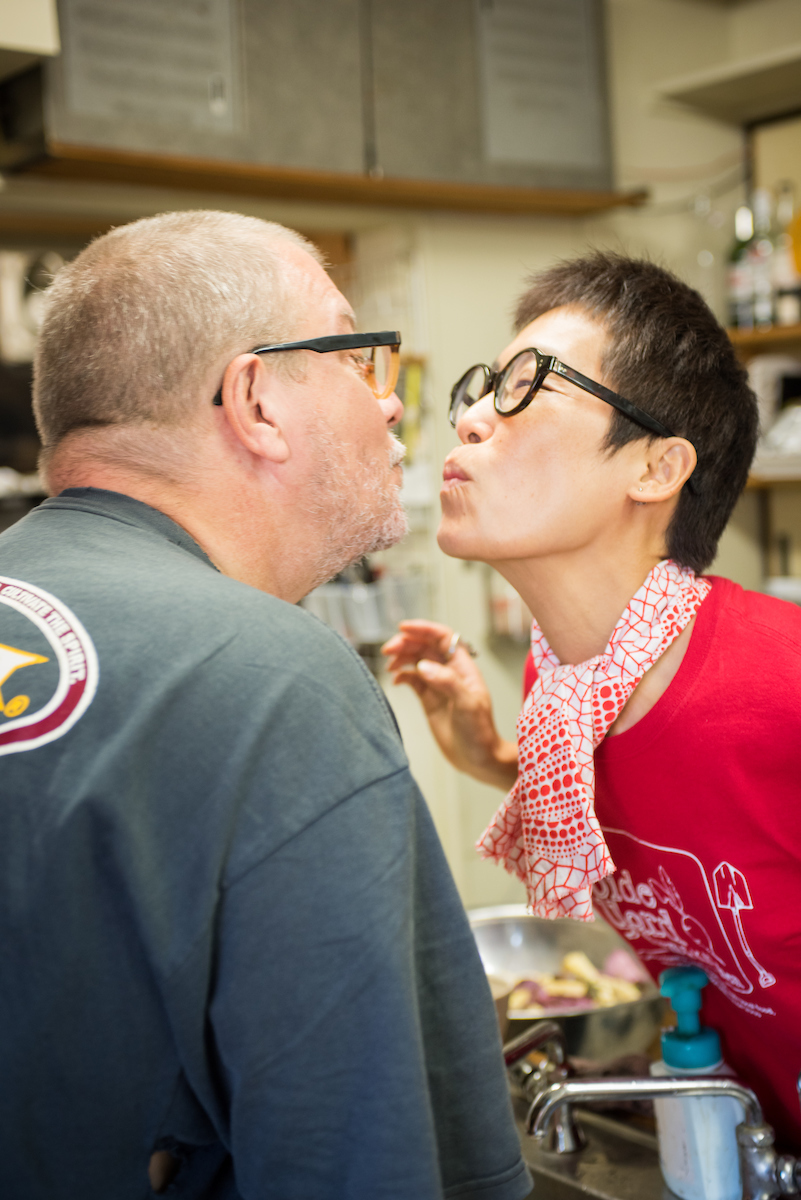
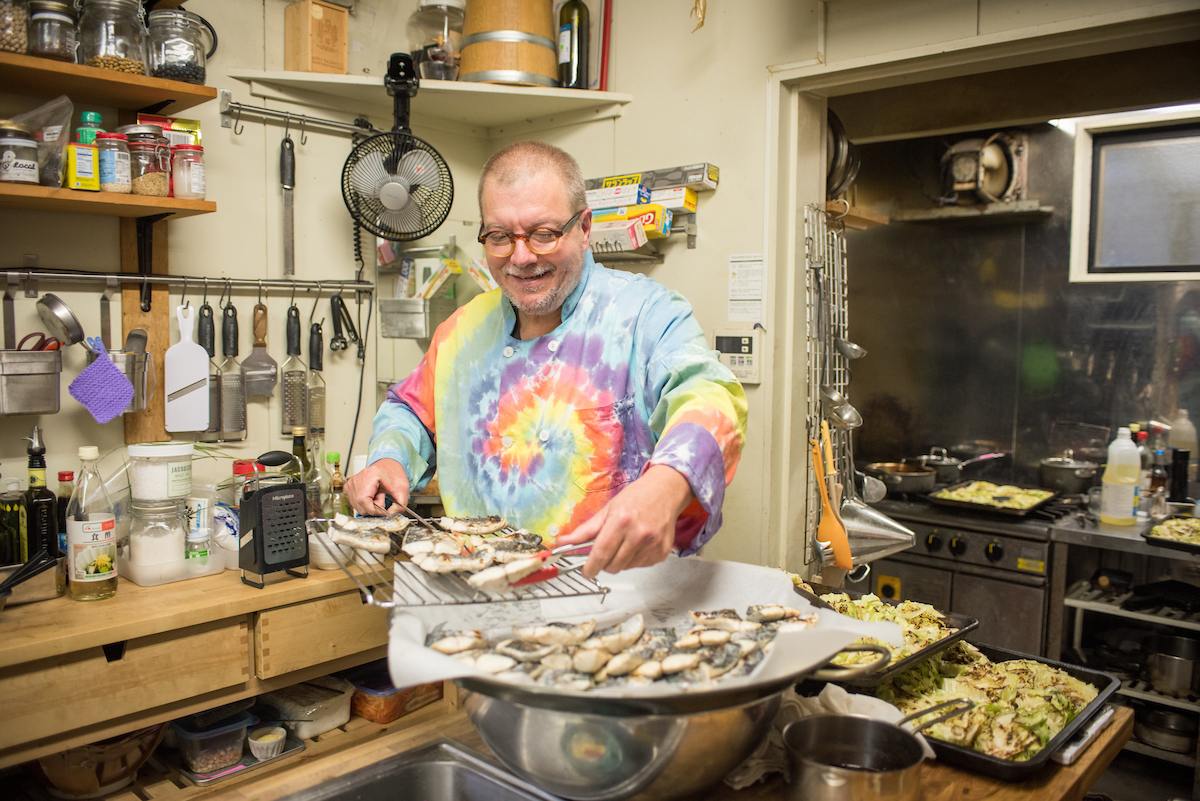

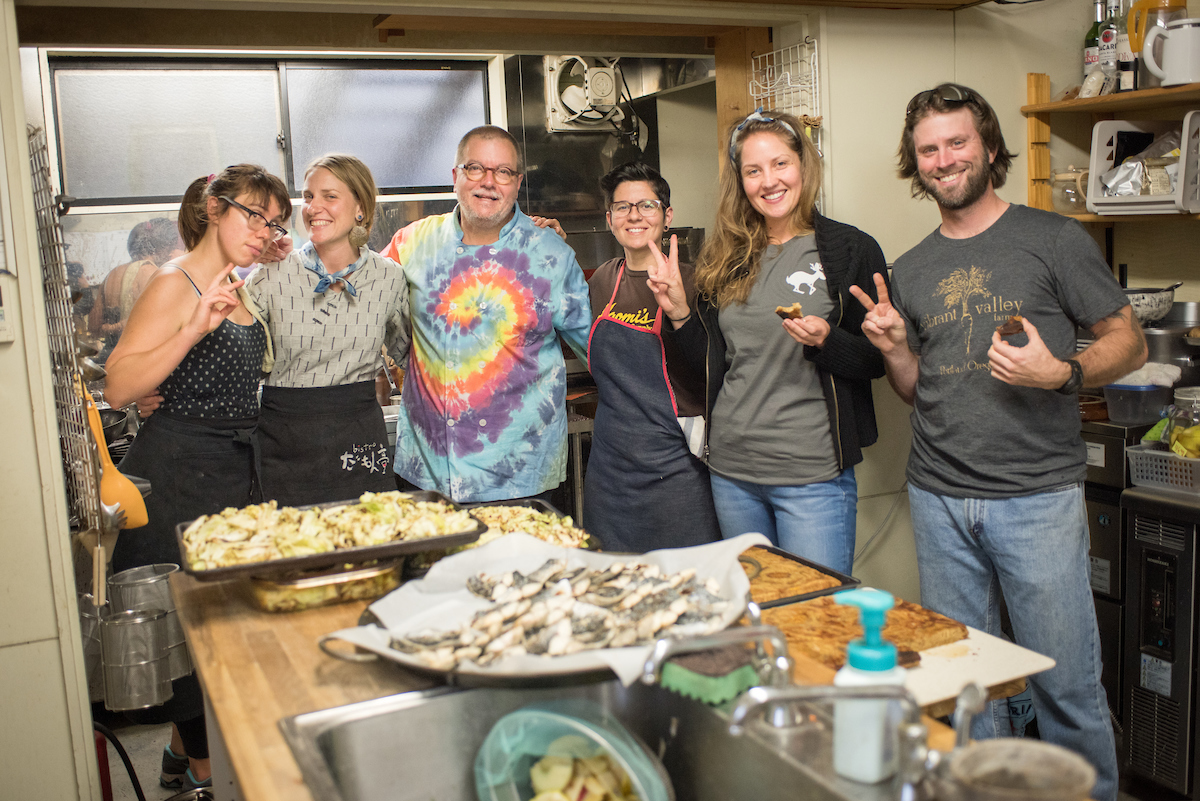
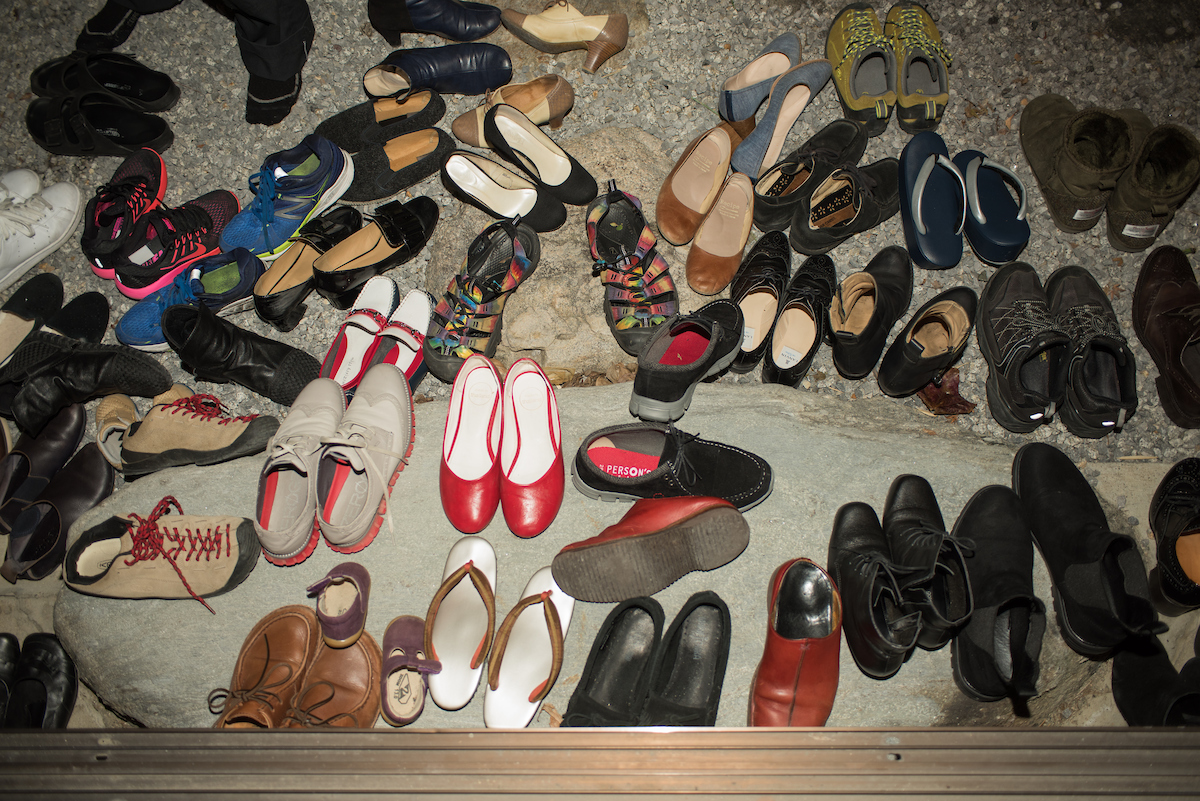

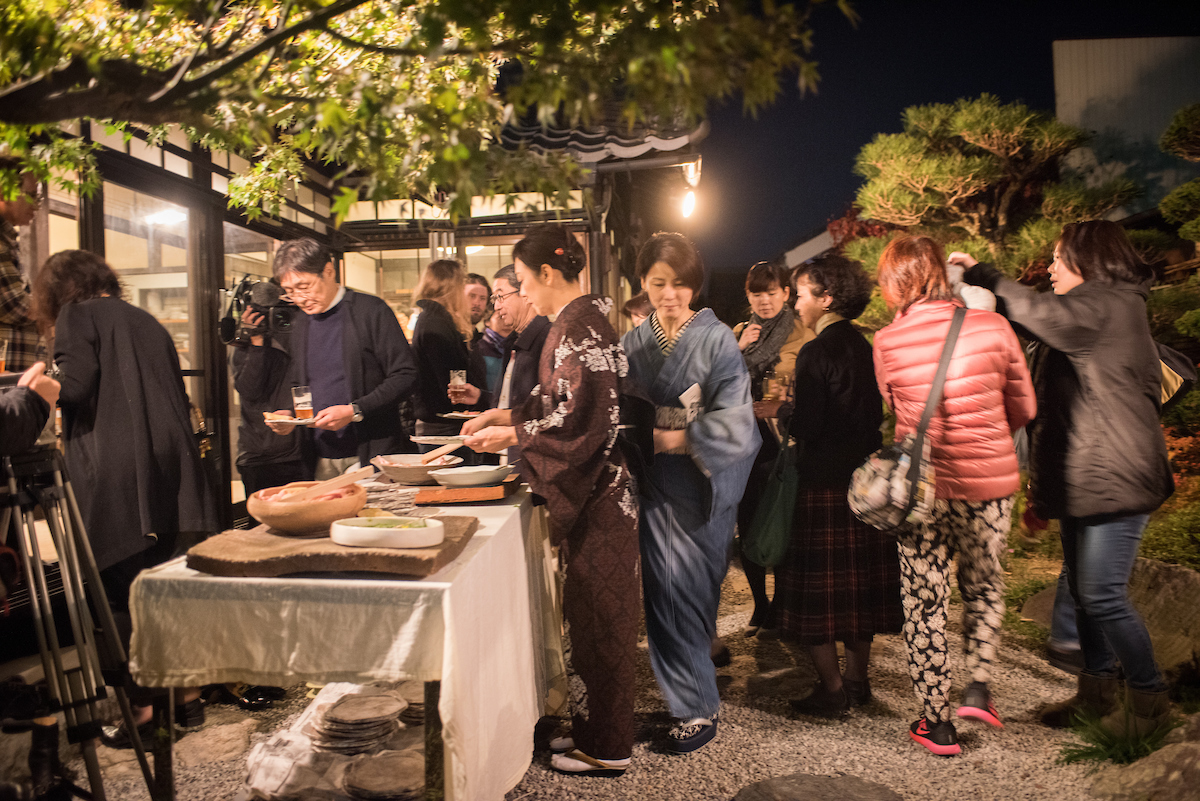
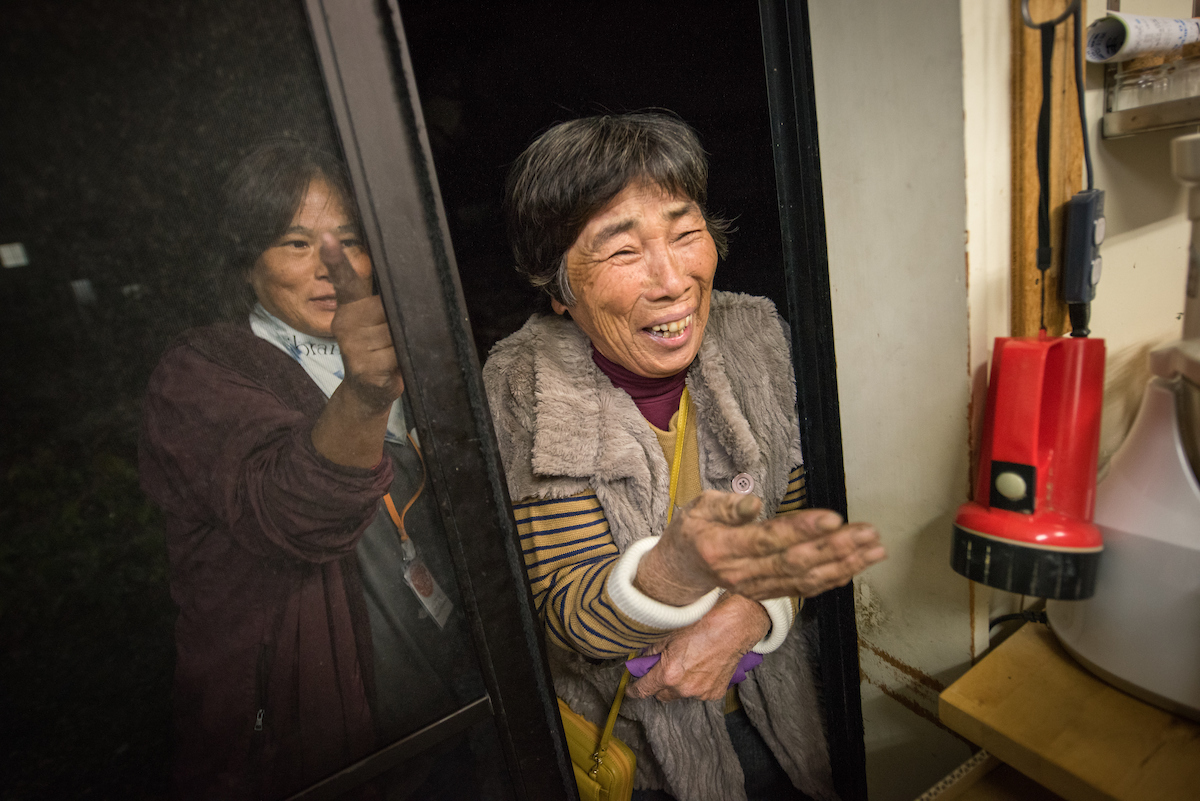
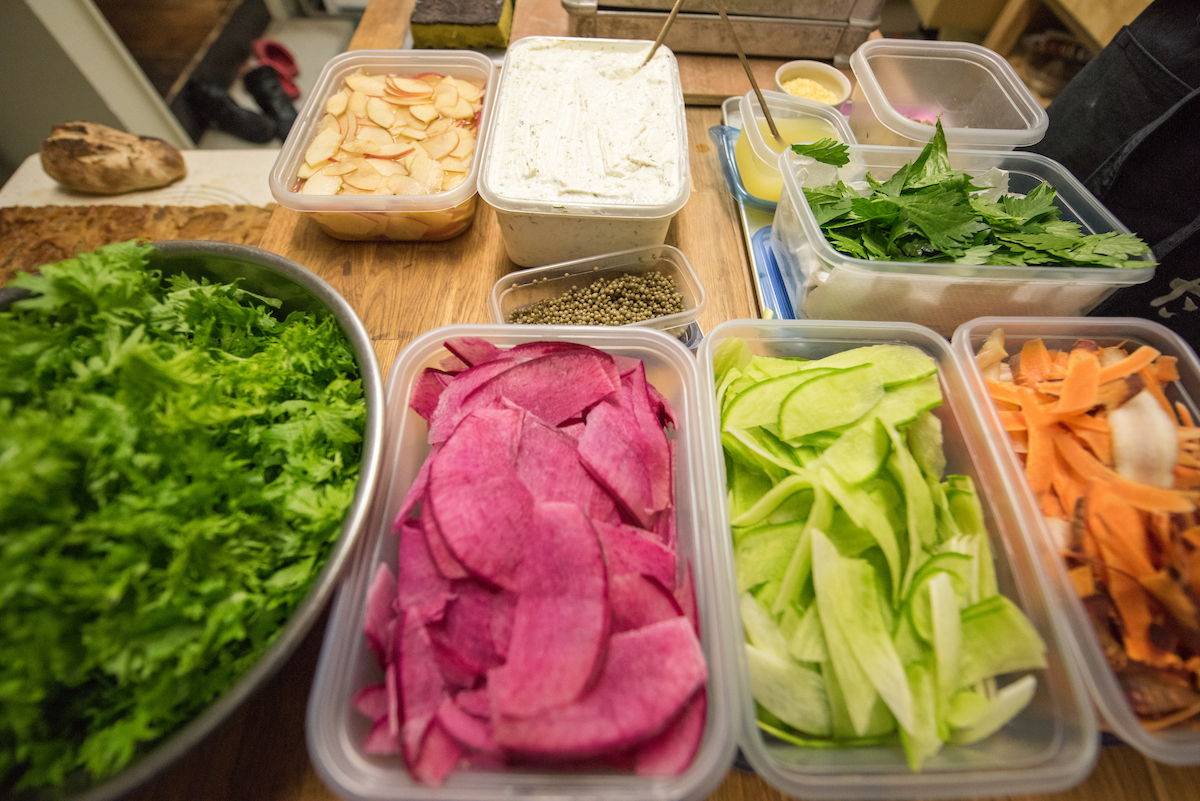
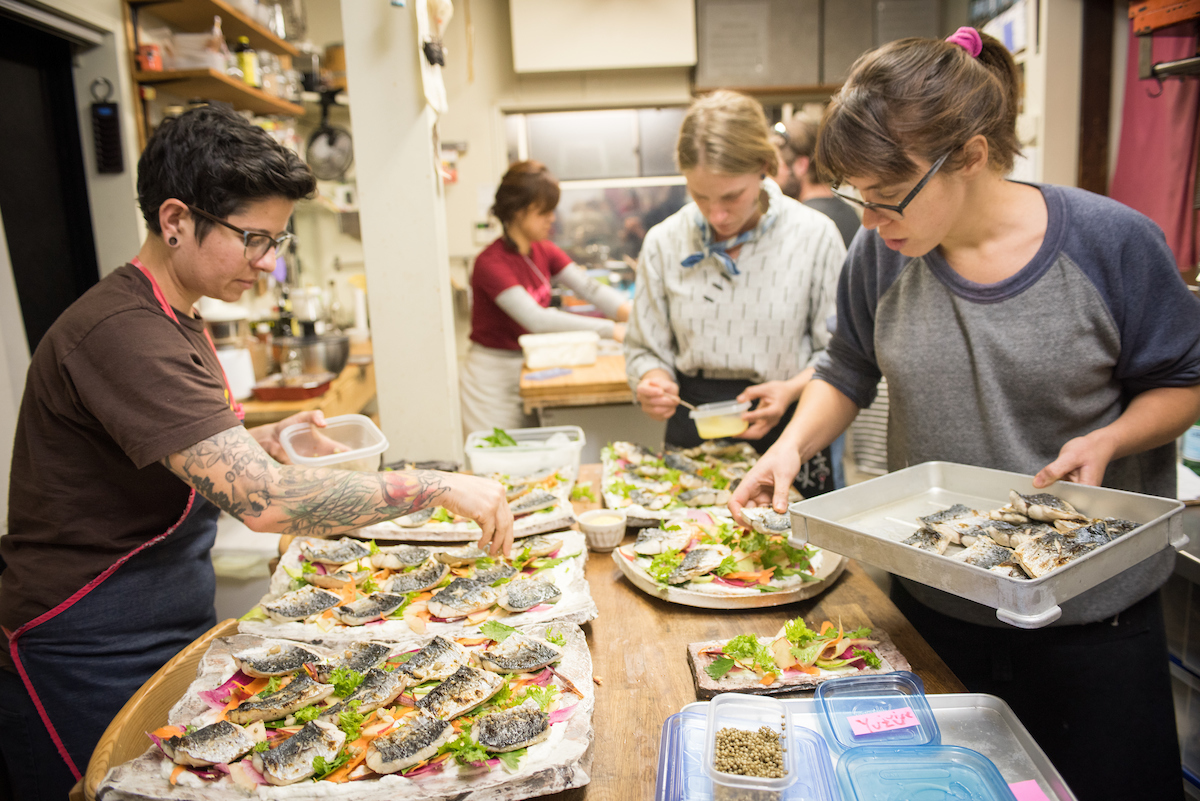

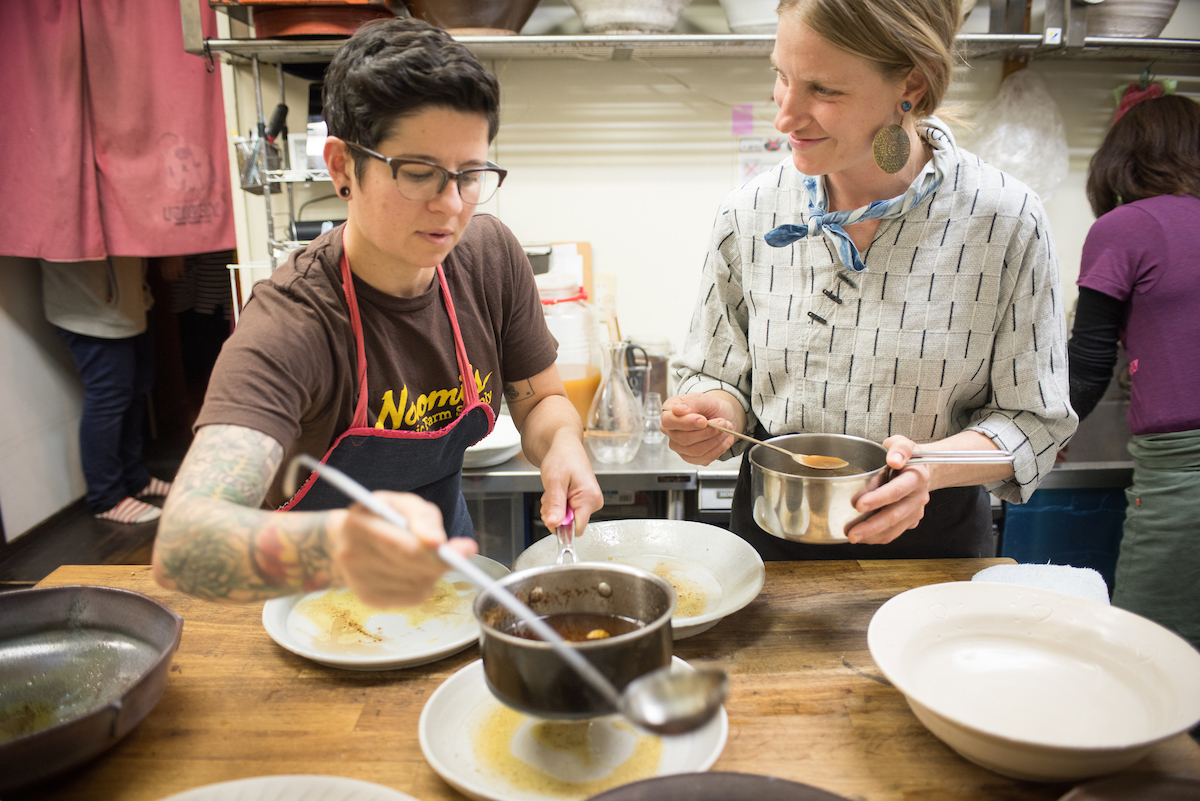
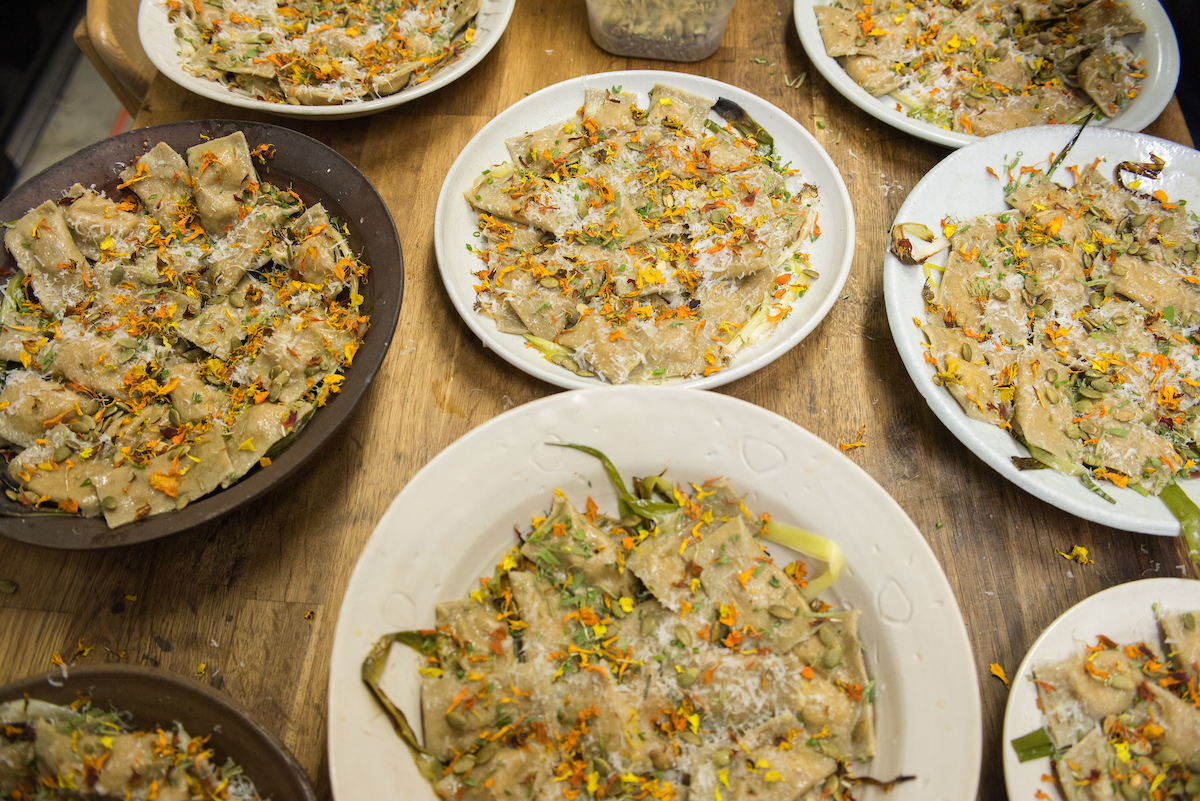
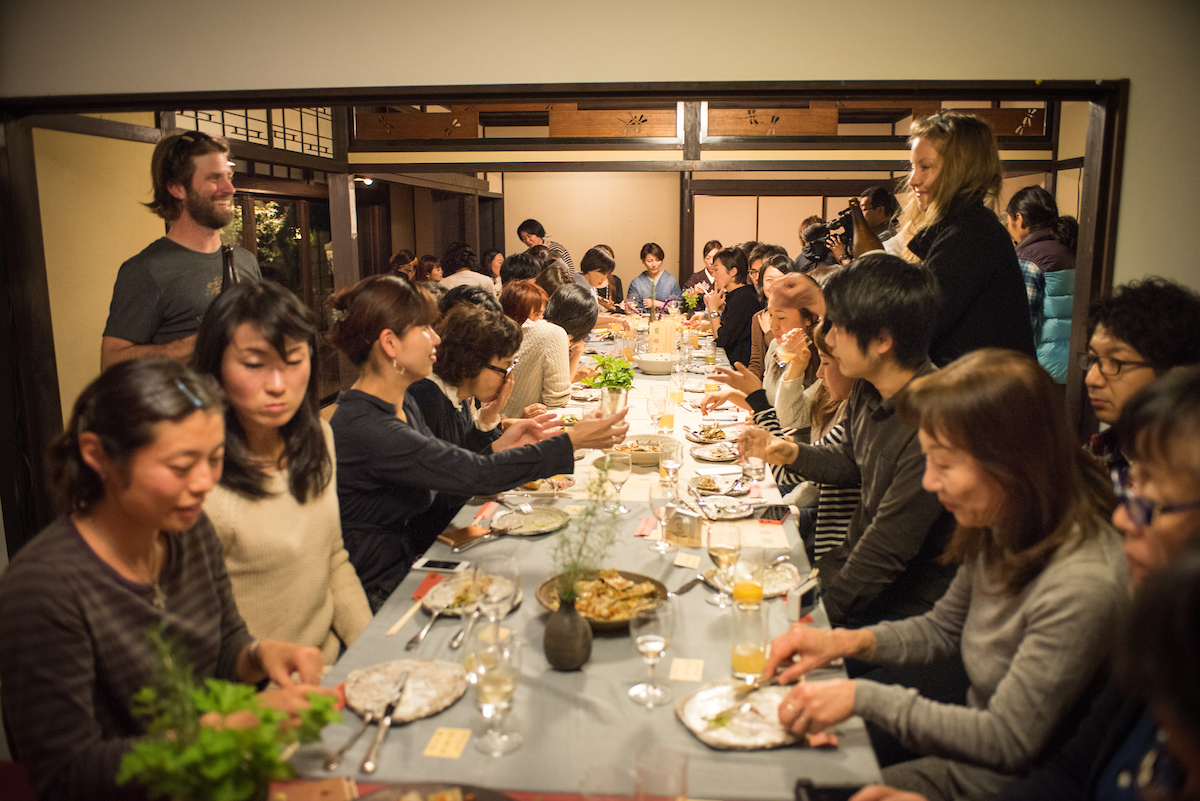
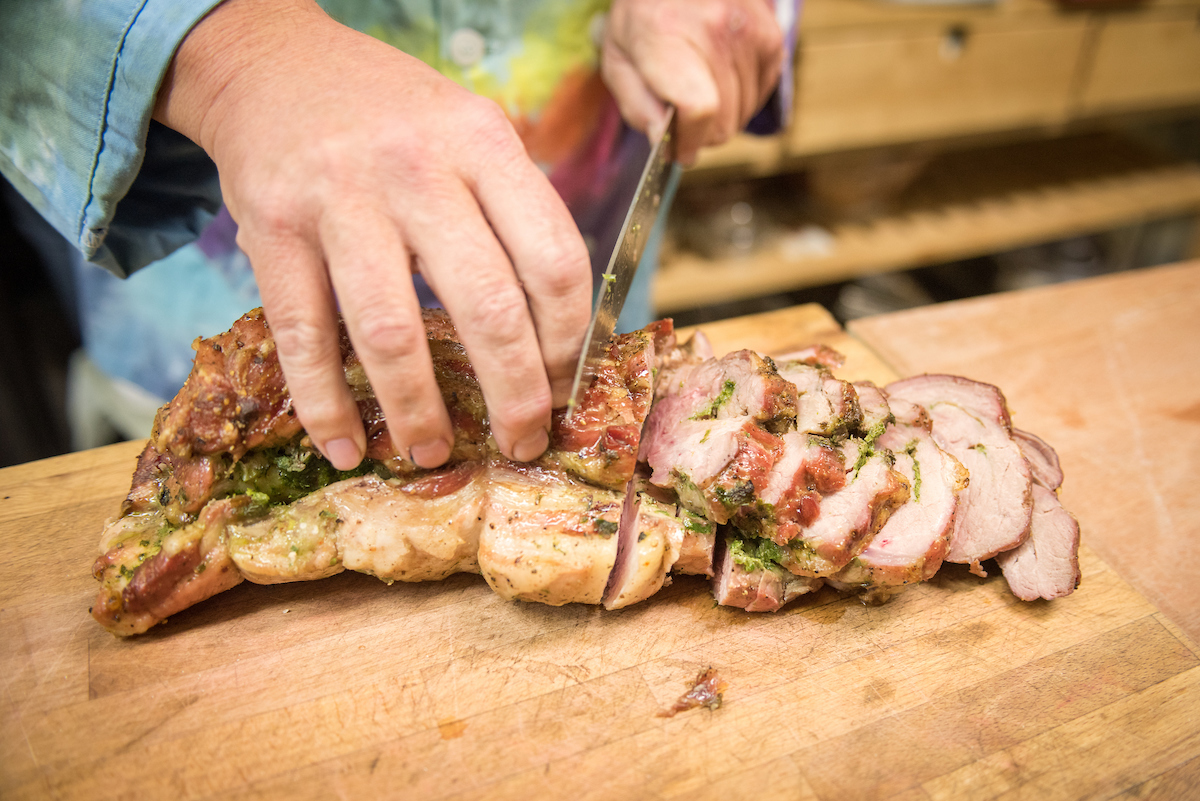
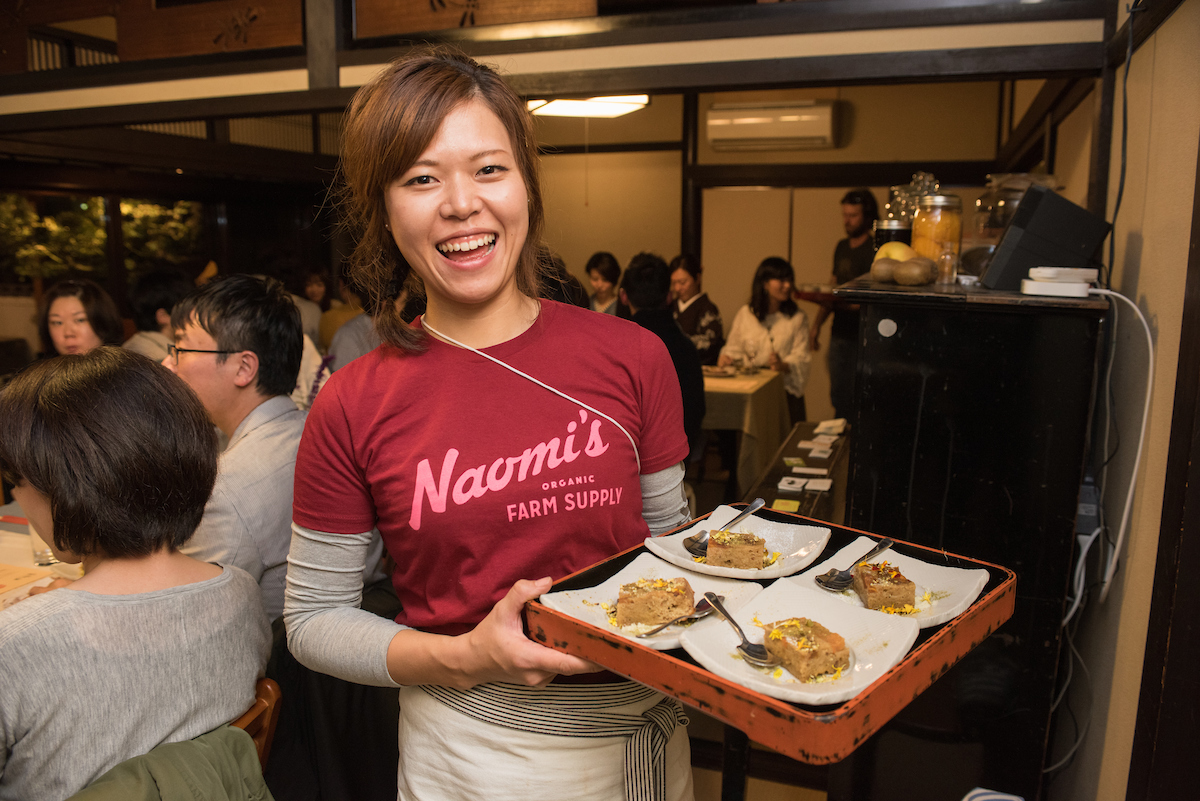
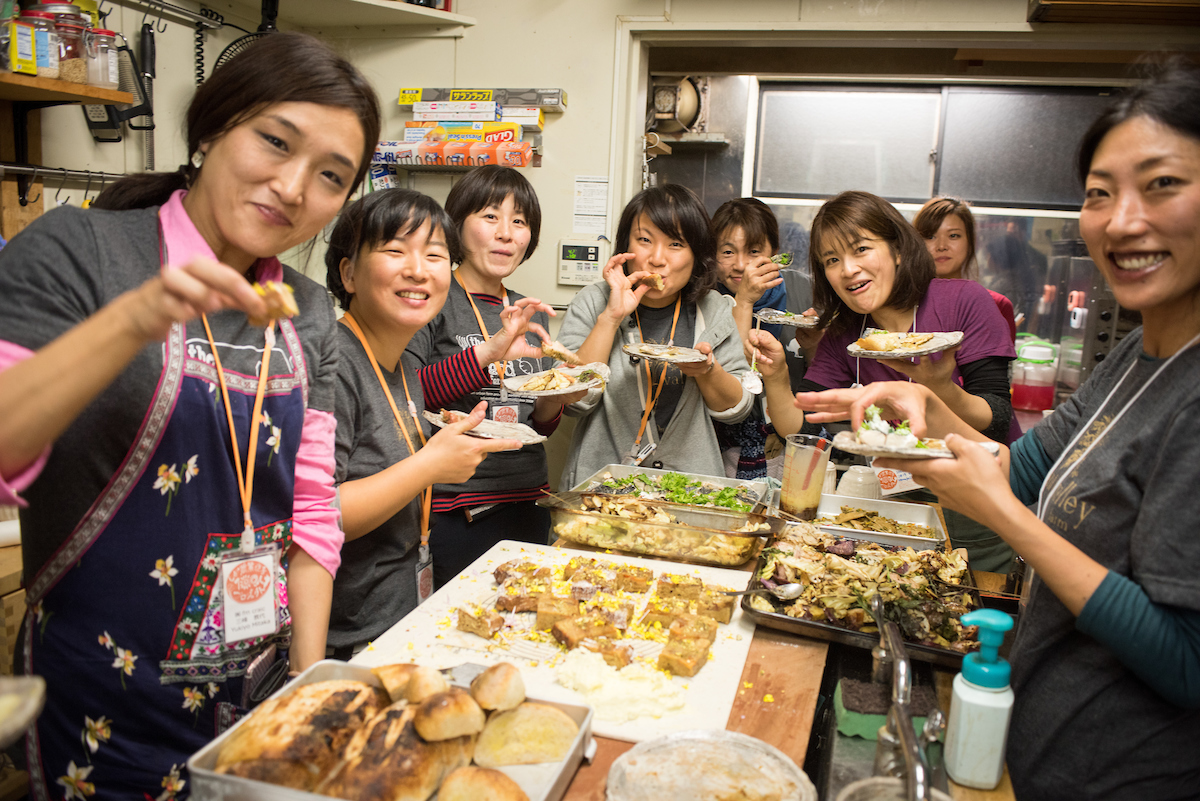
Photos by Shawn Linehan.












